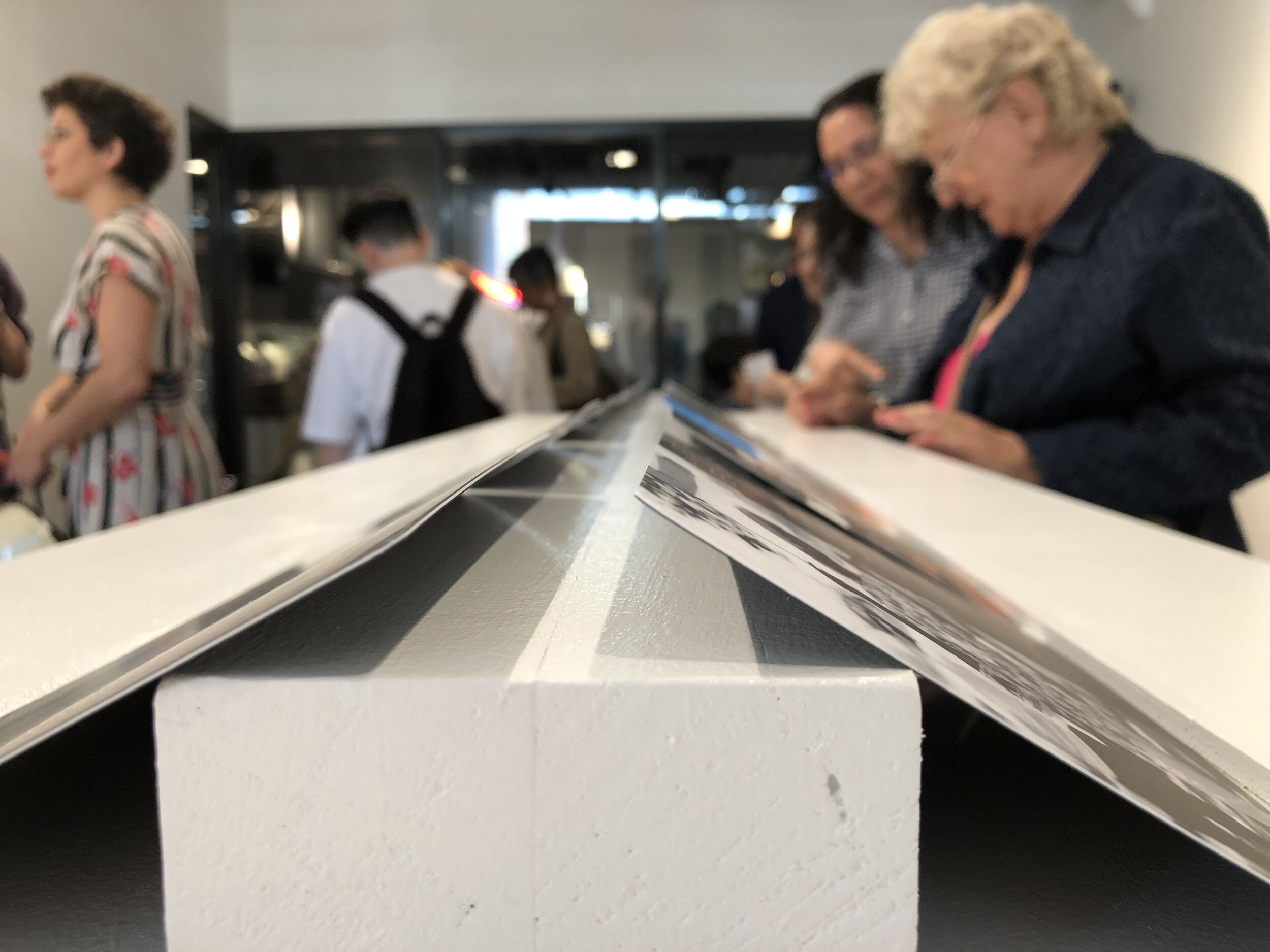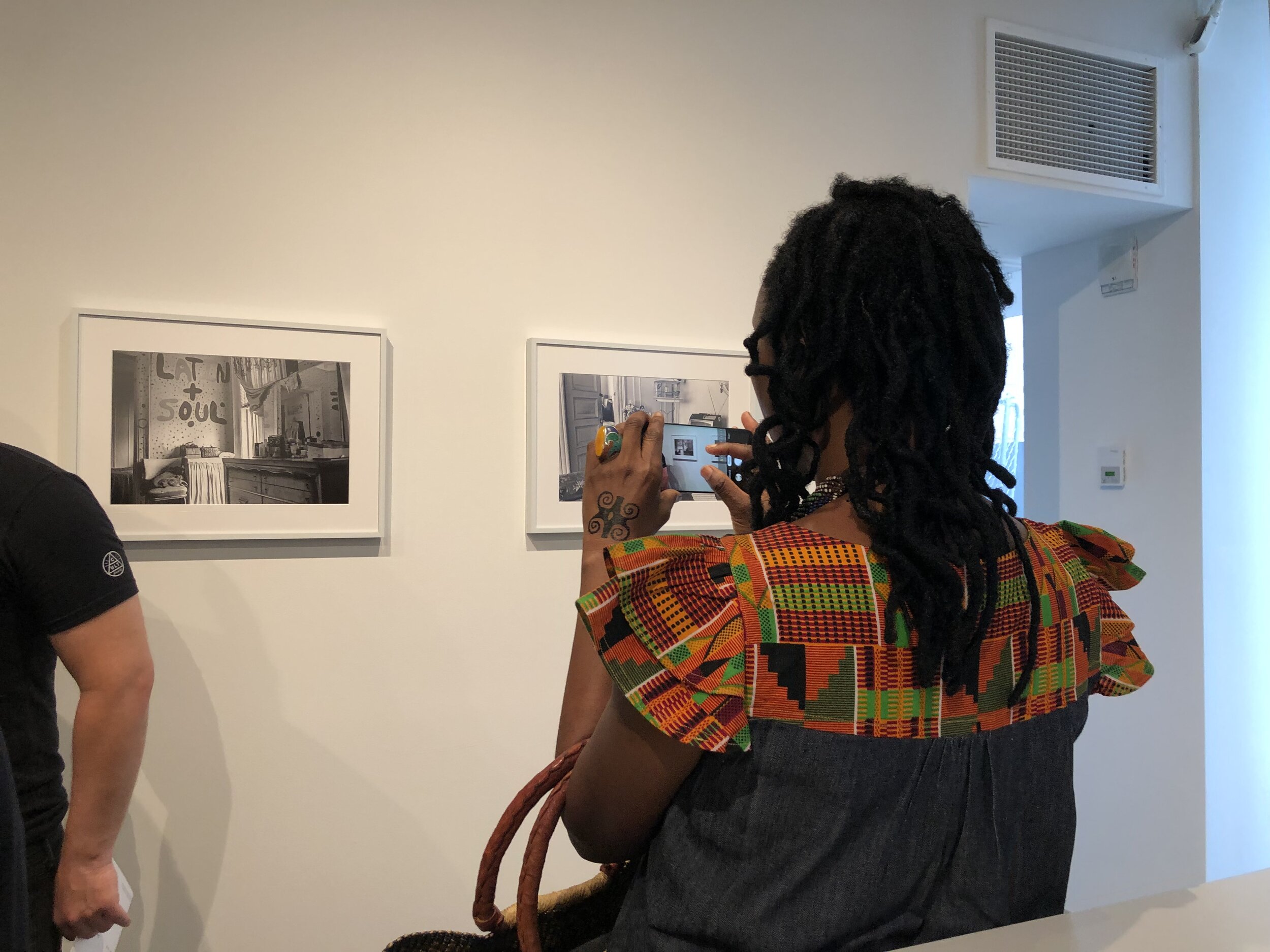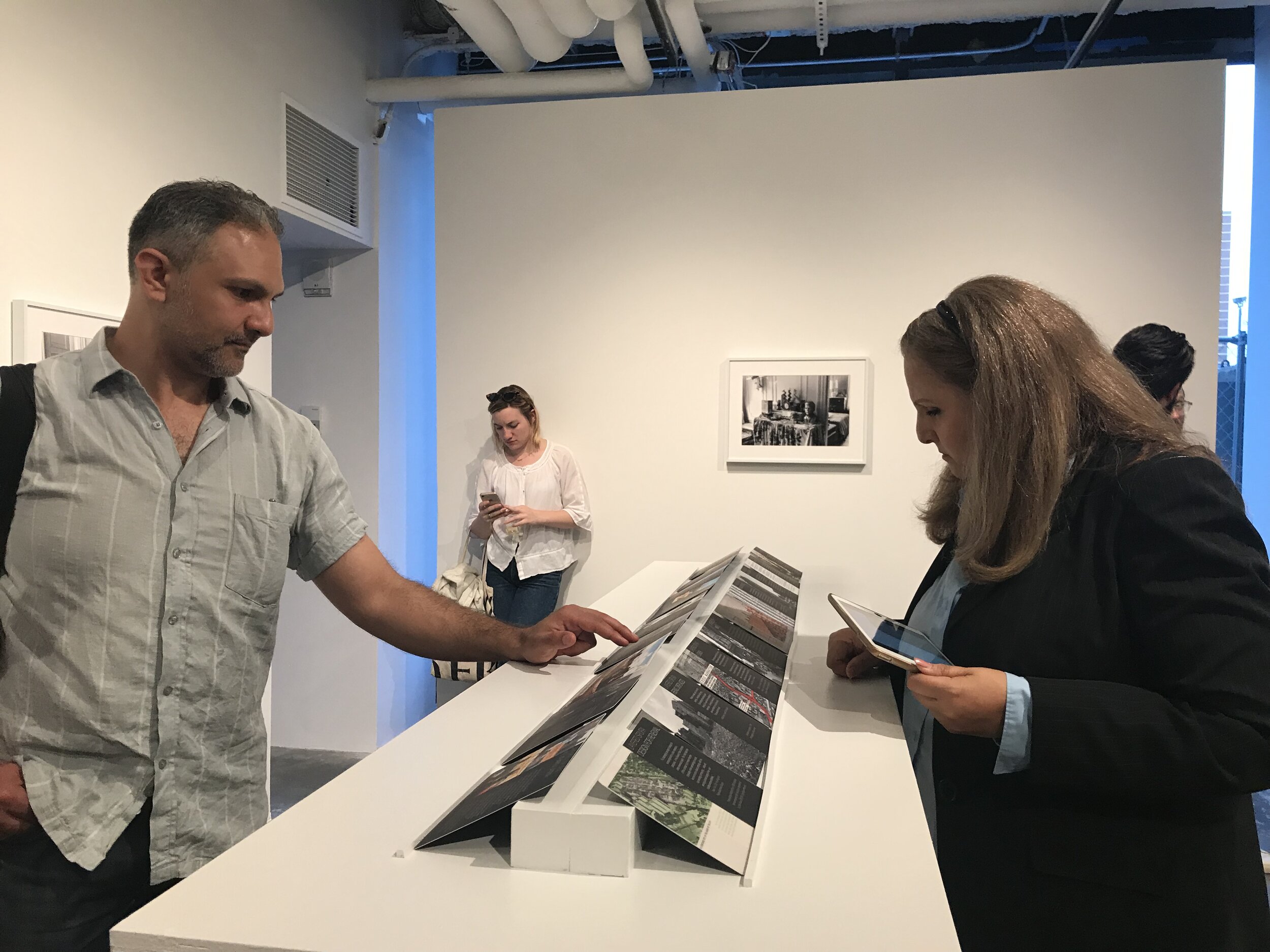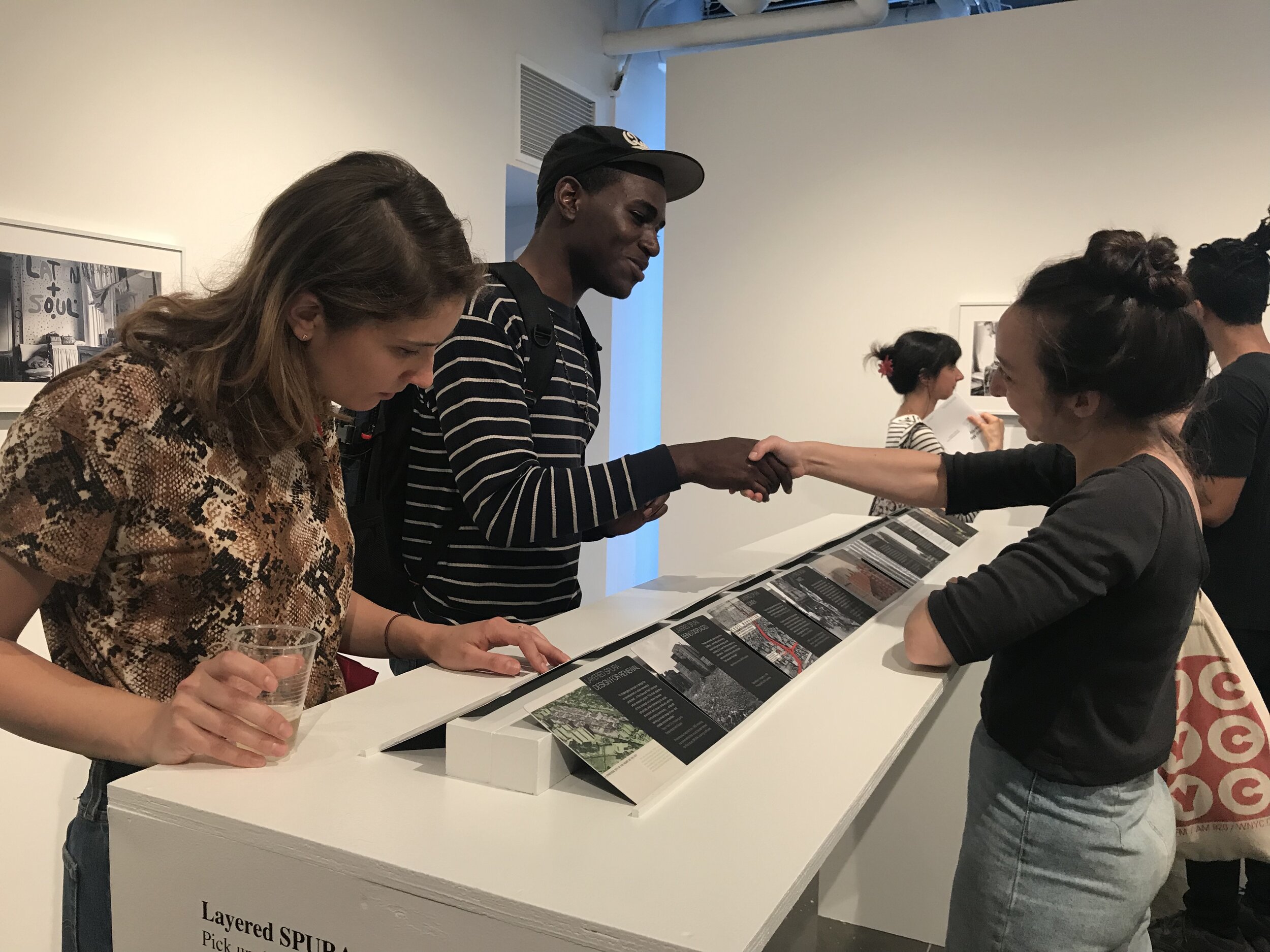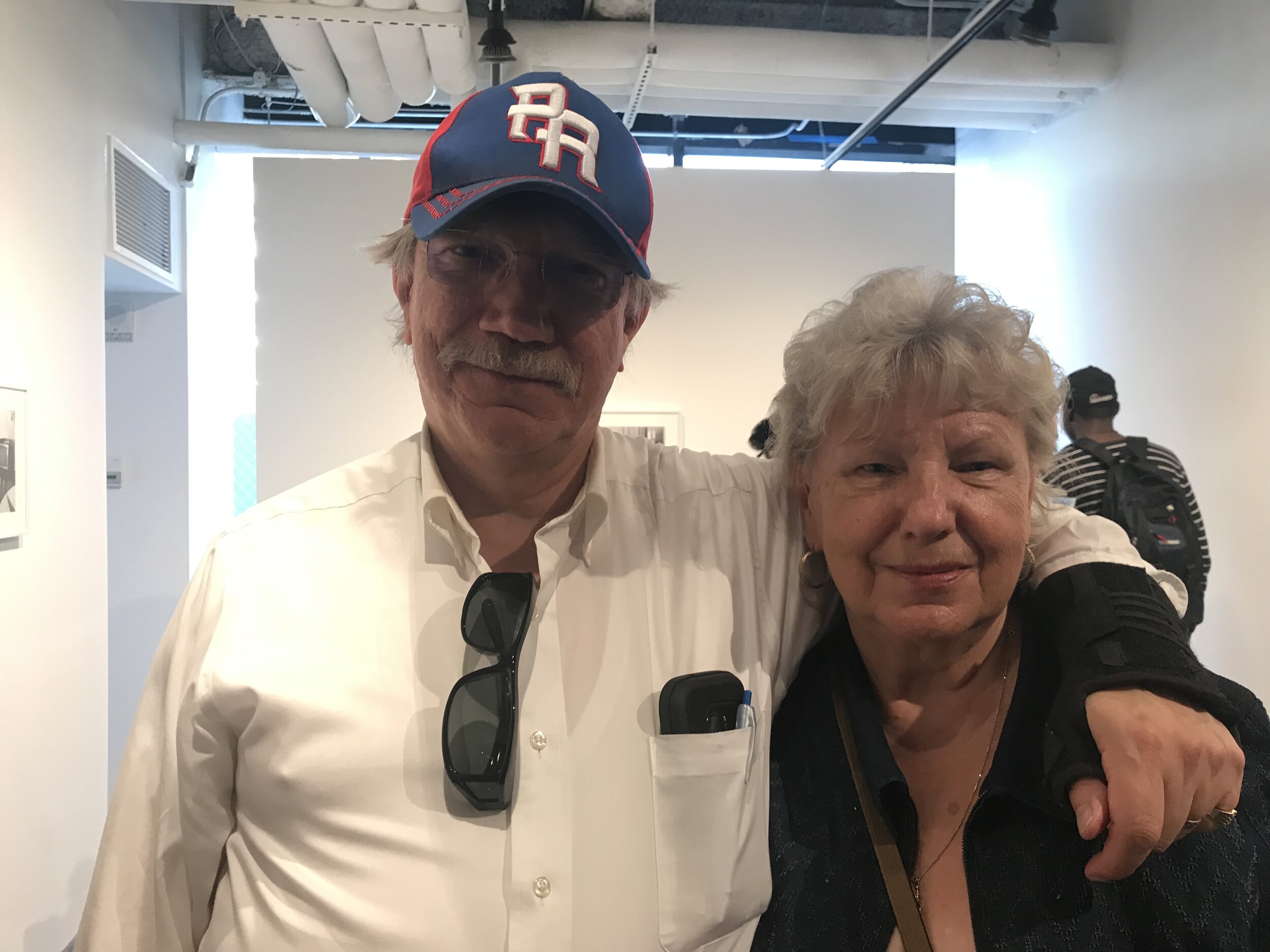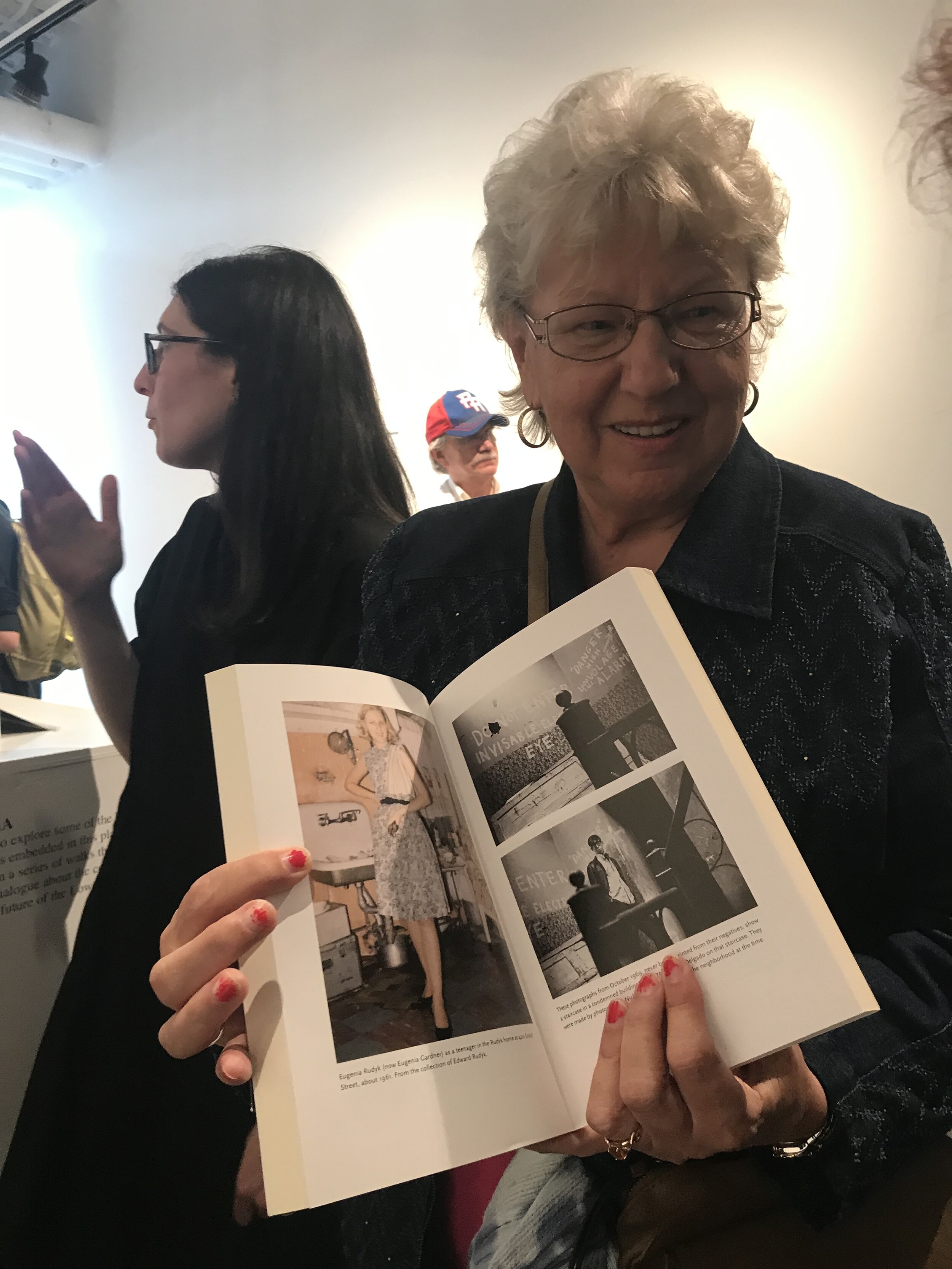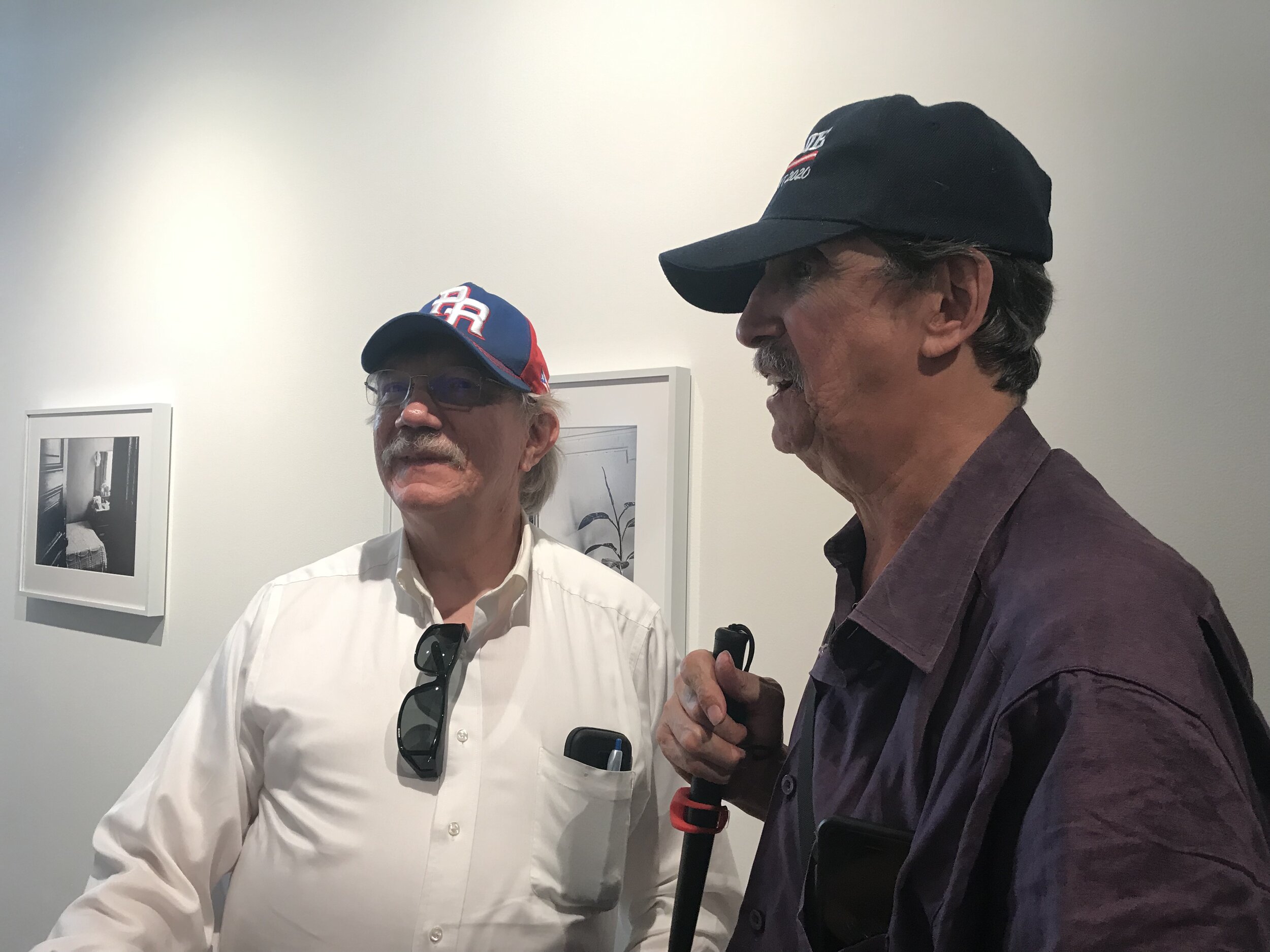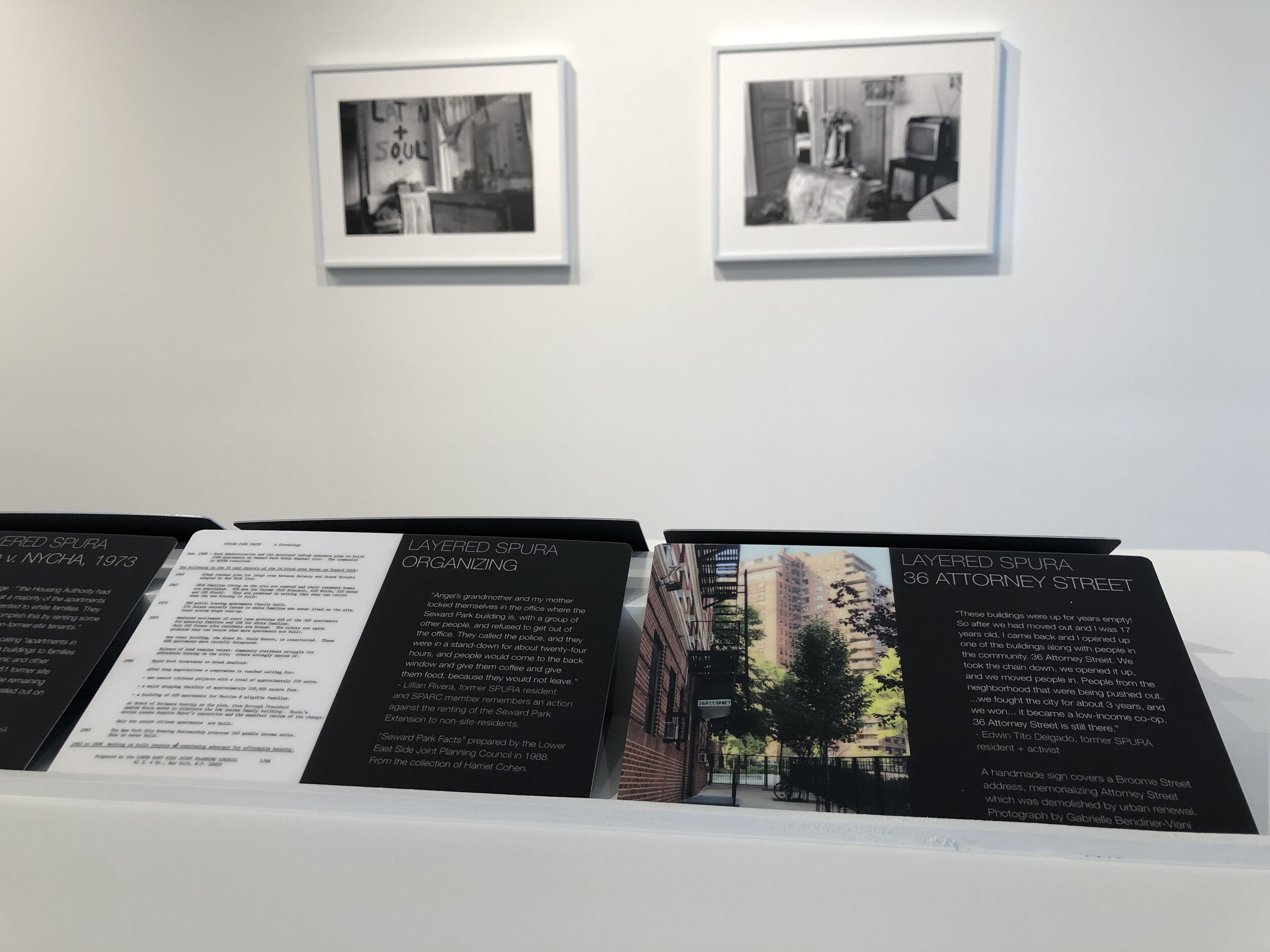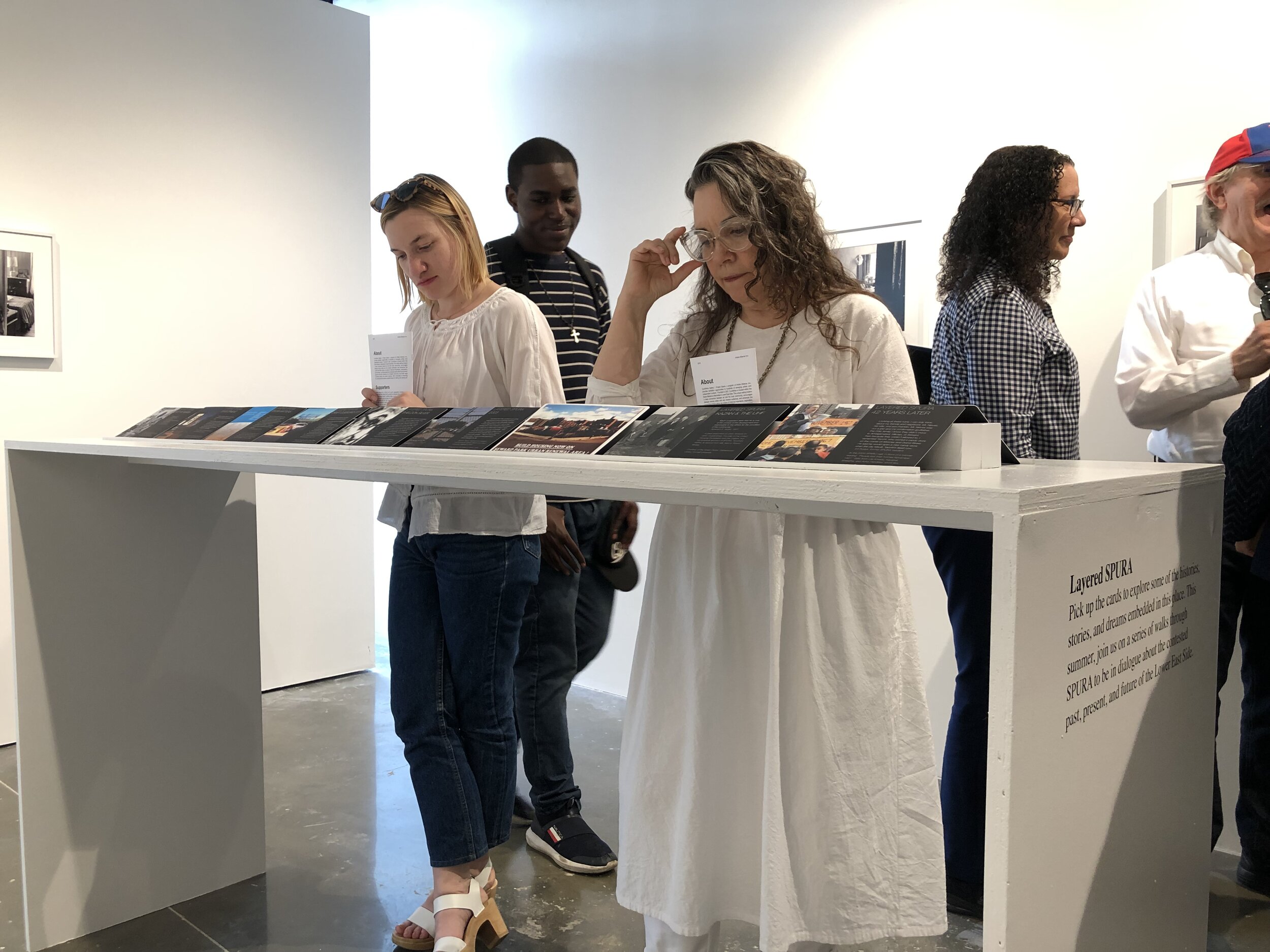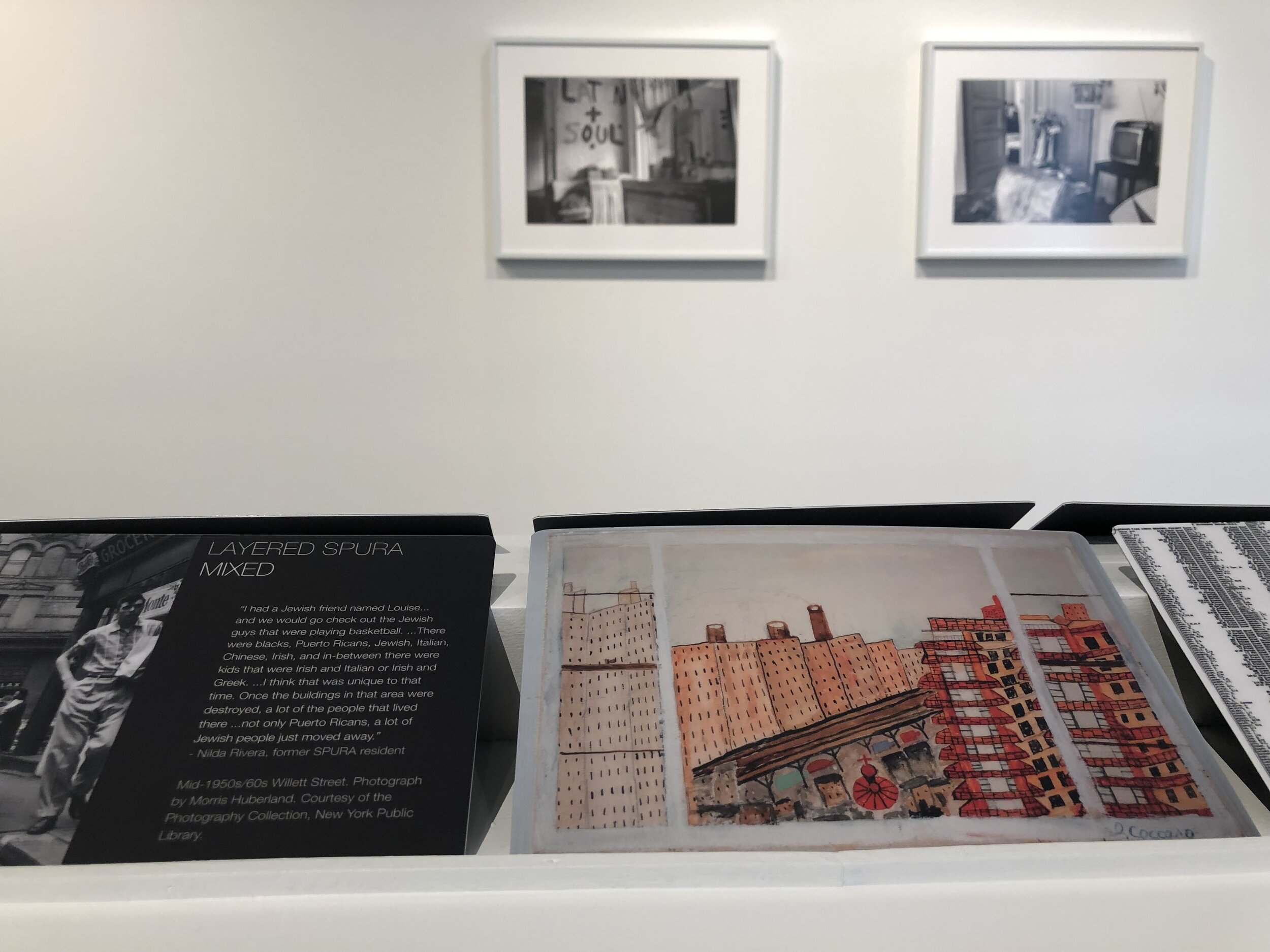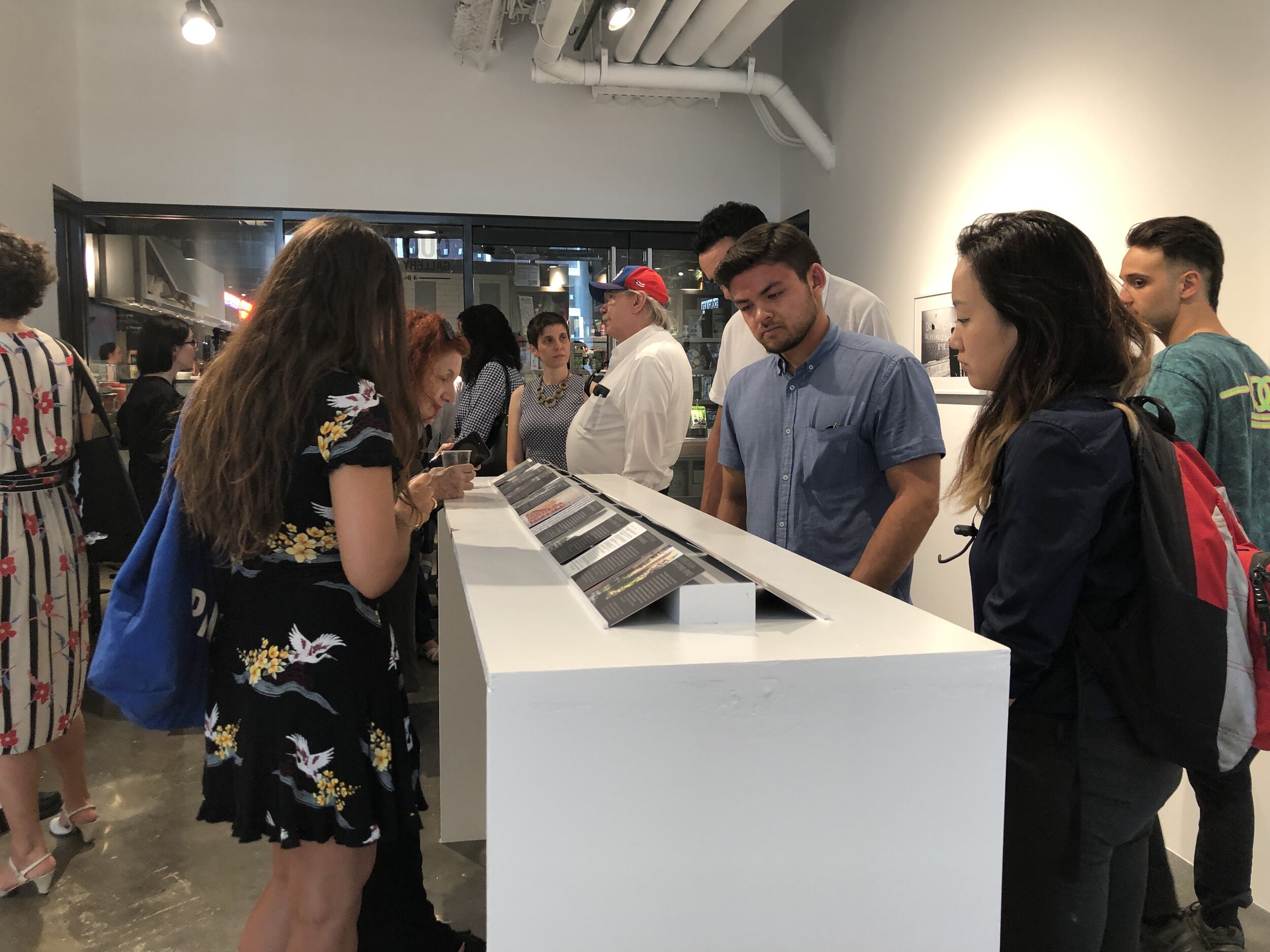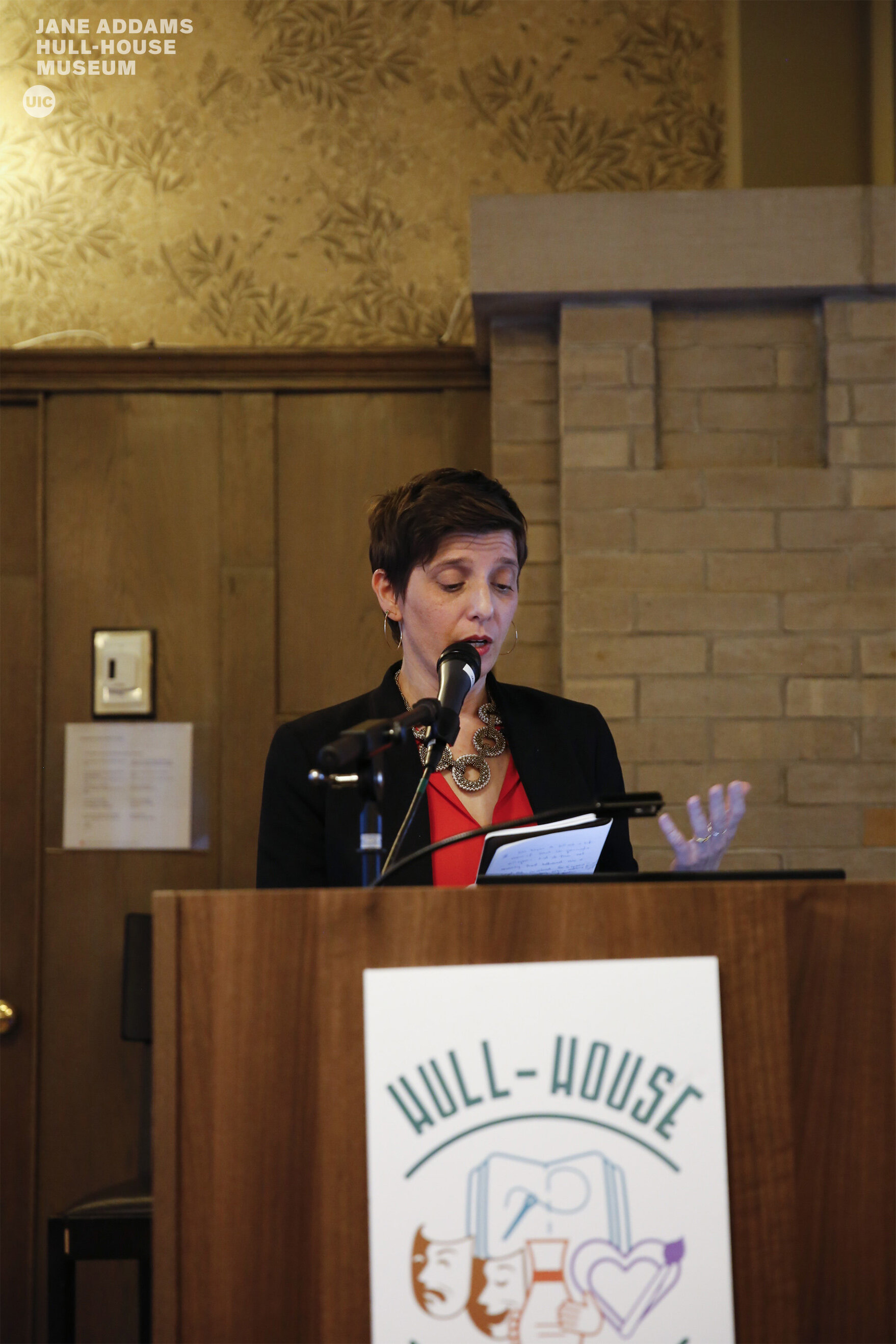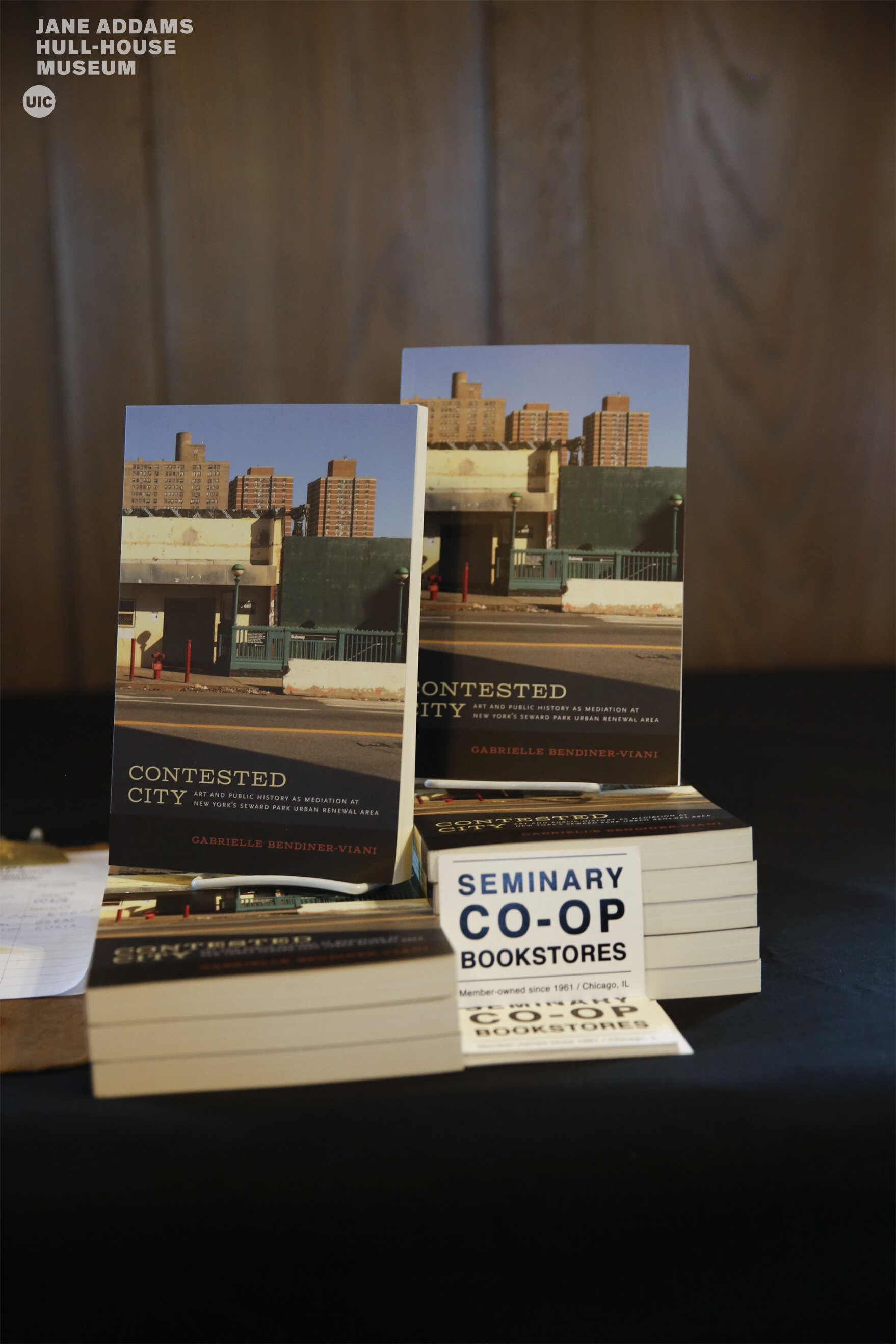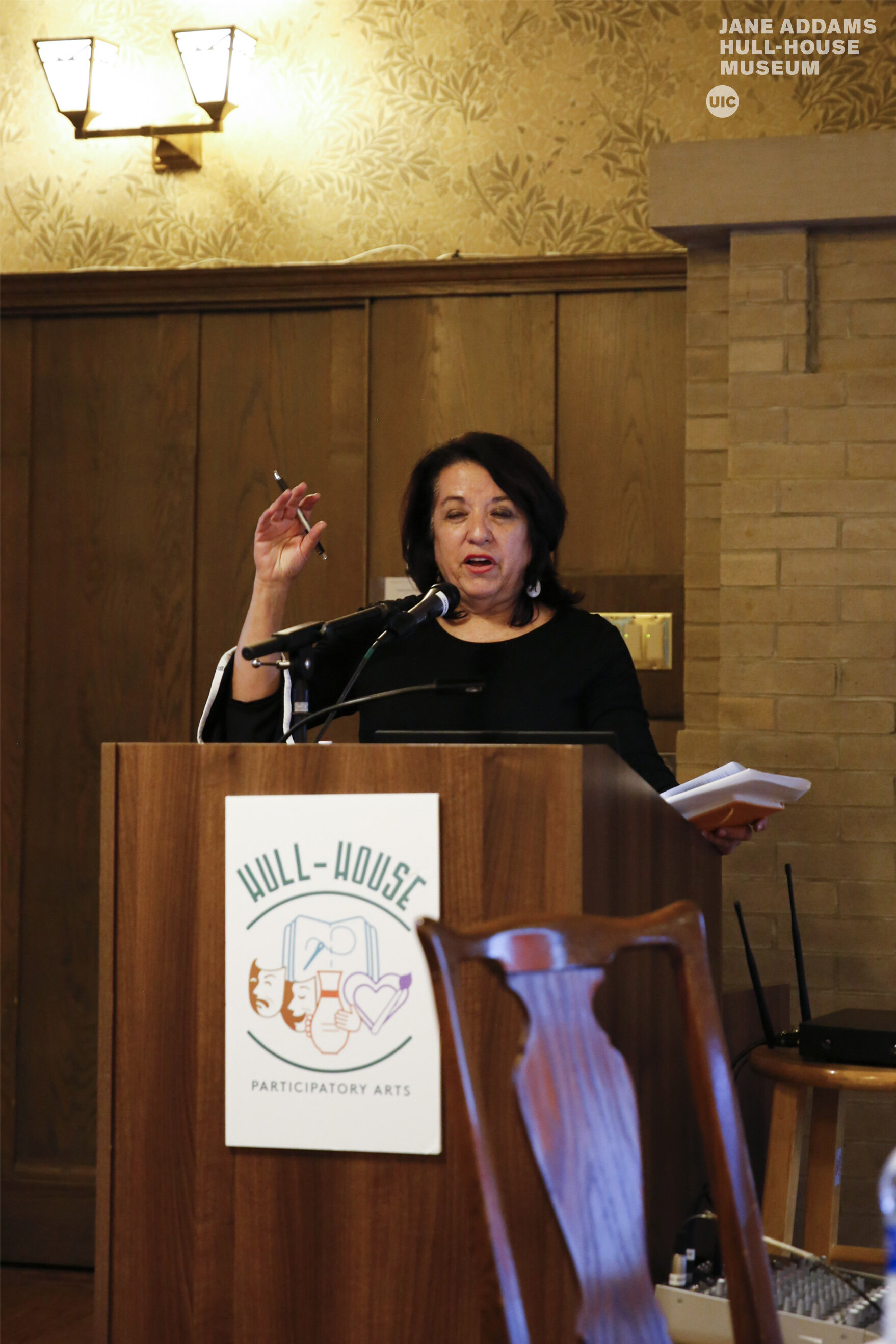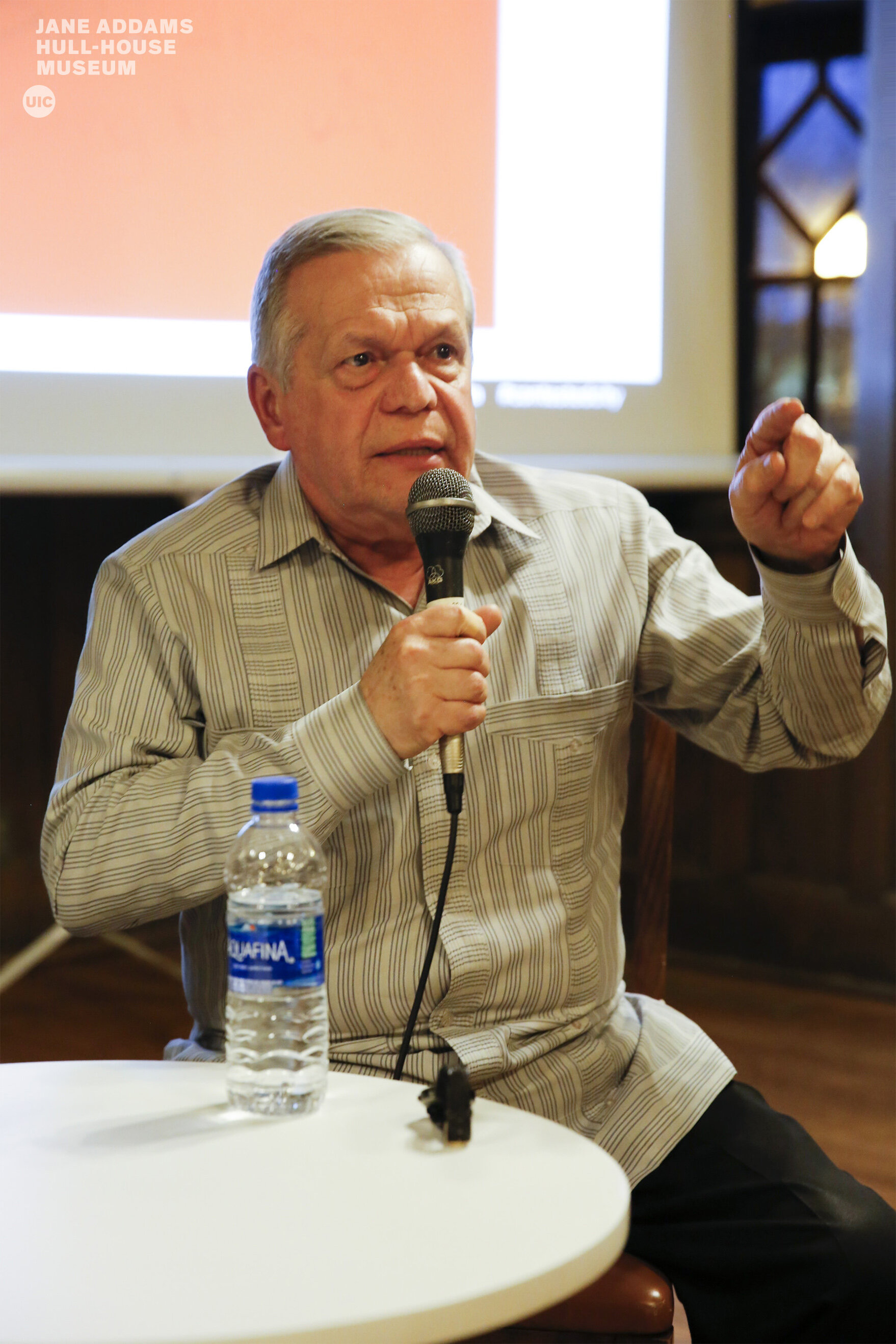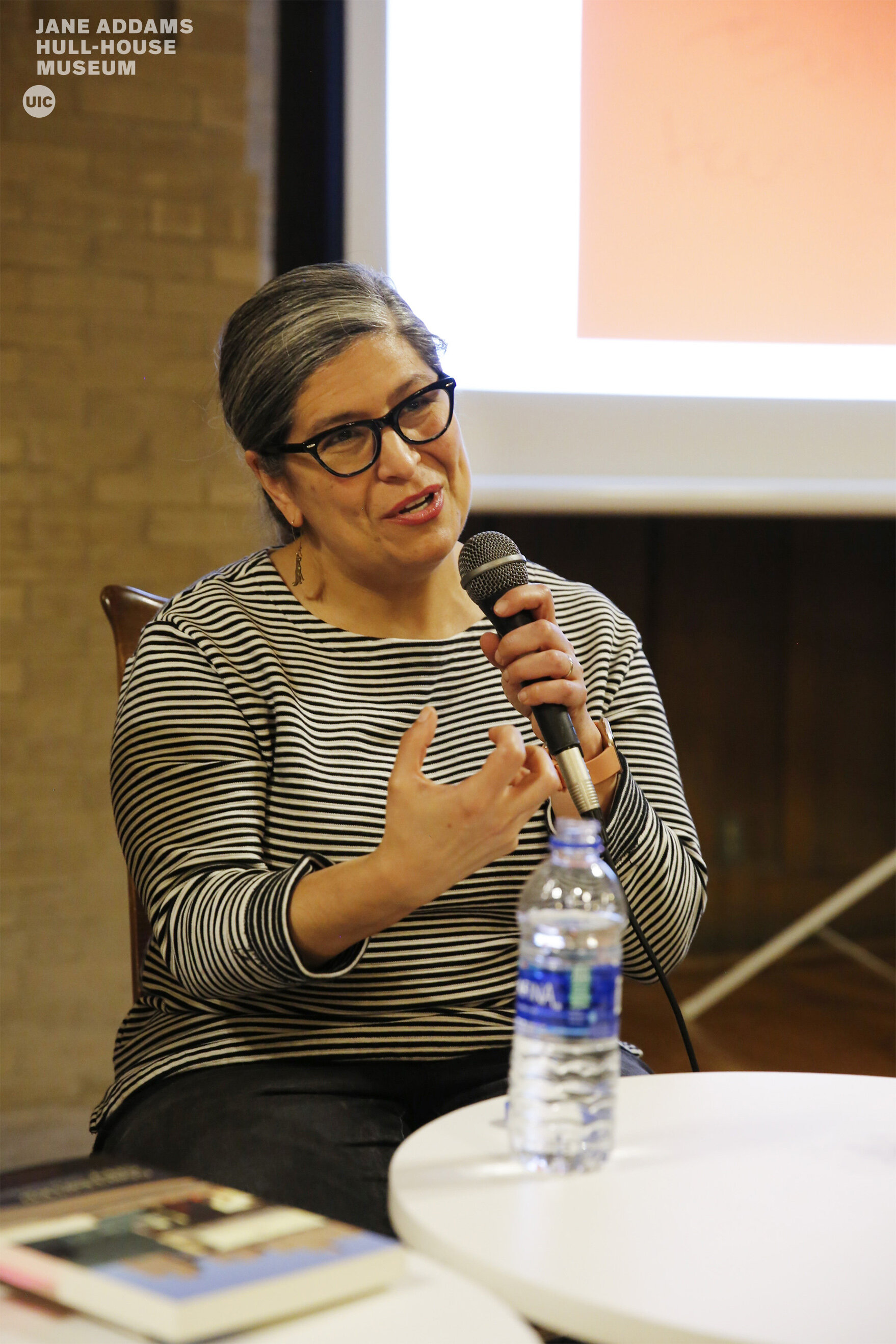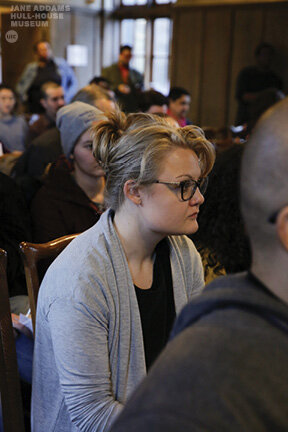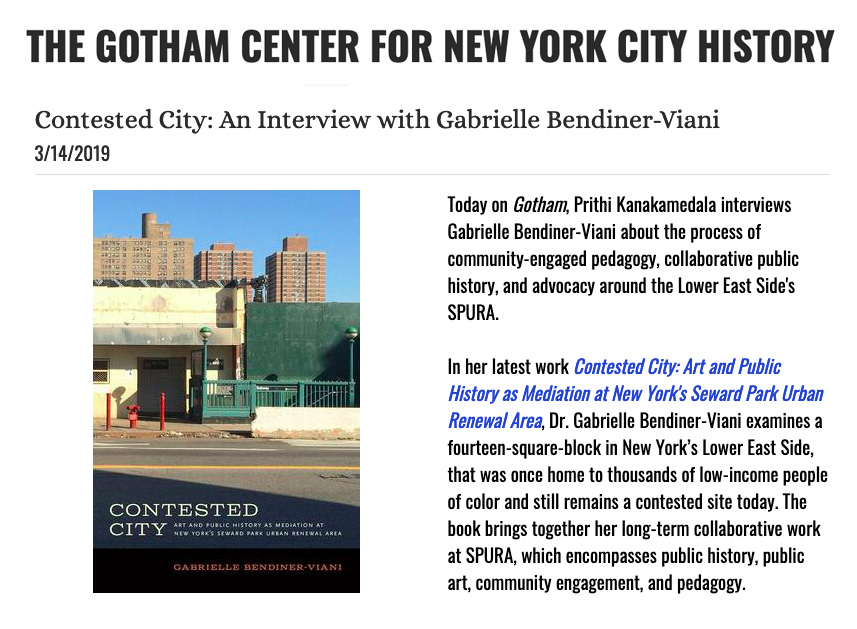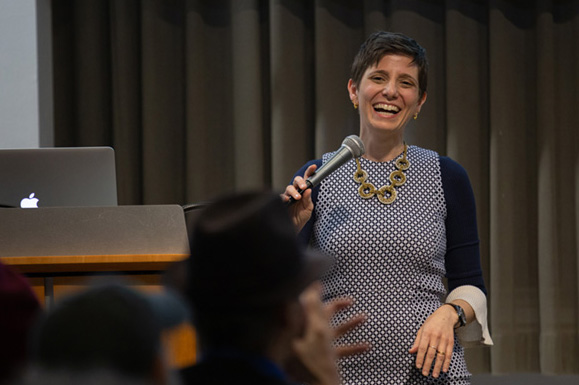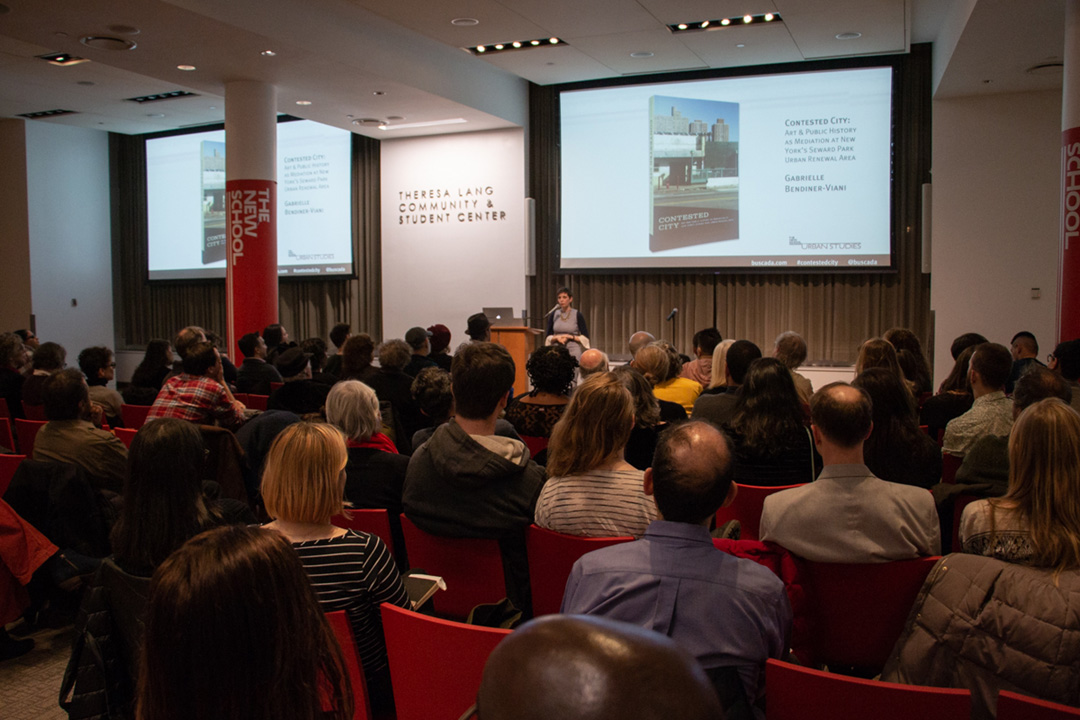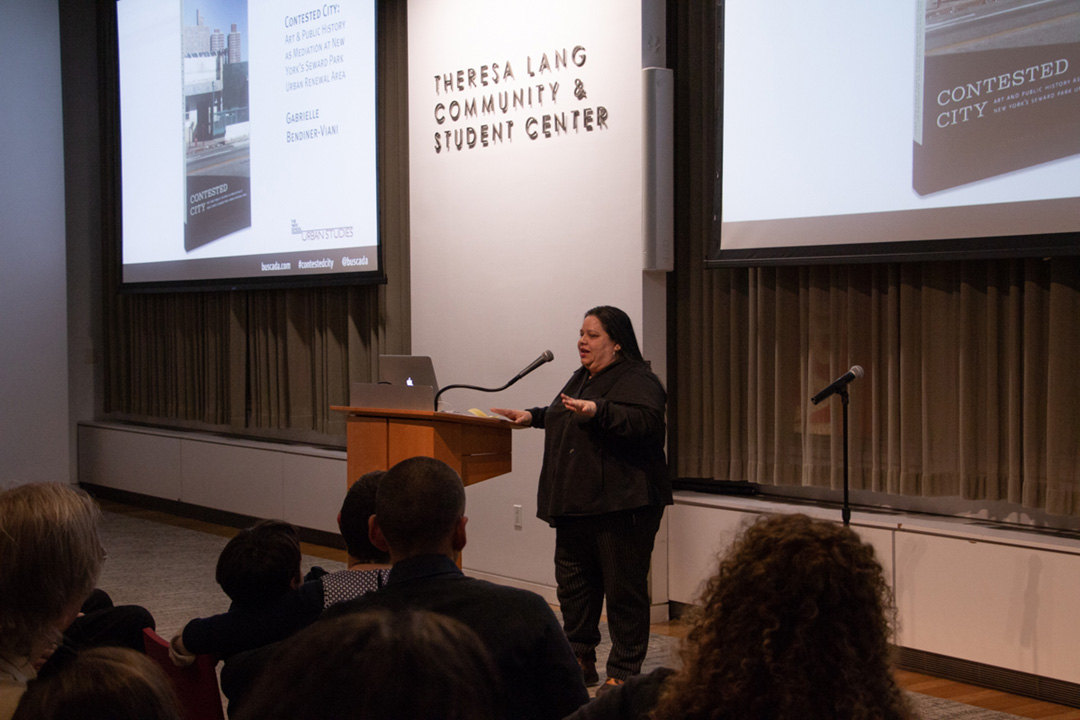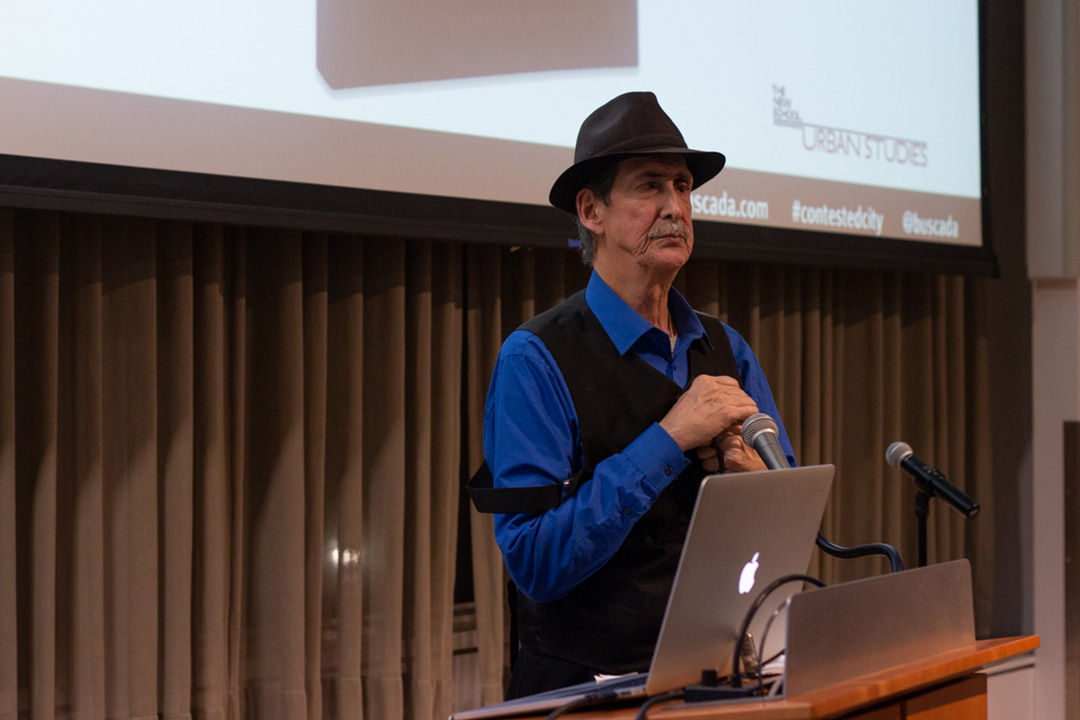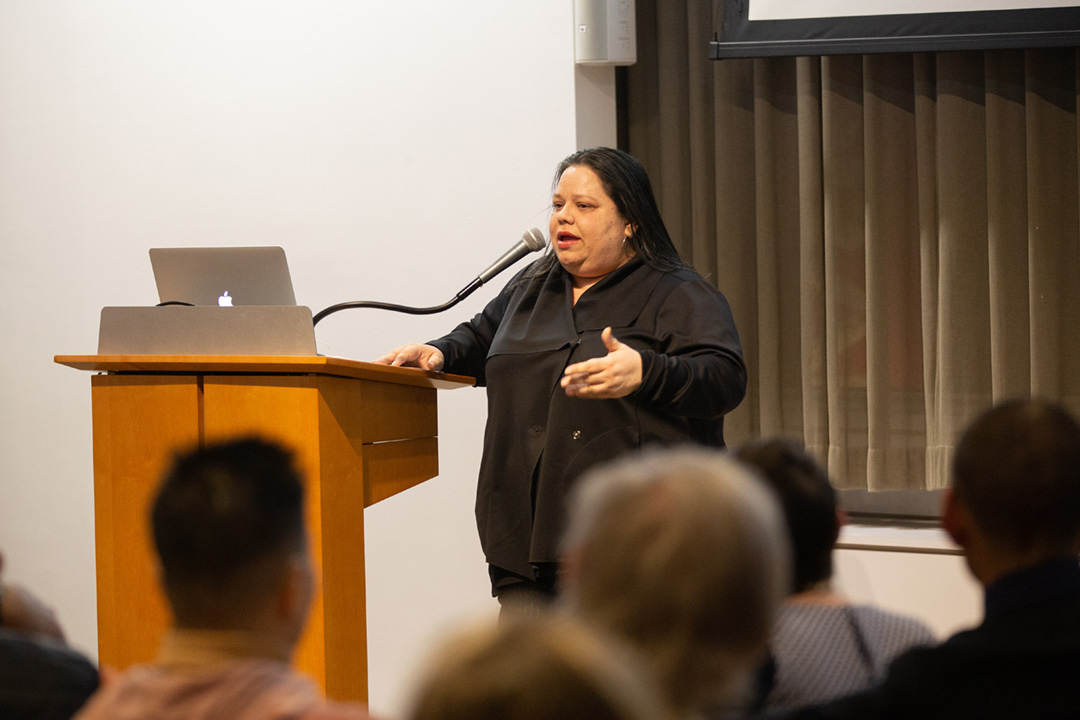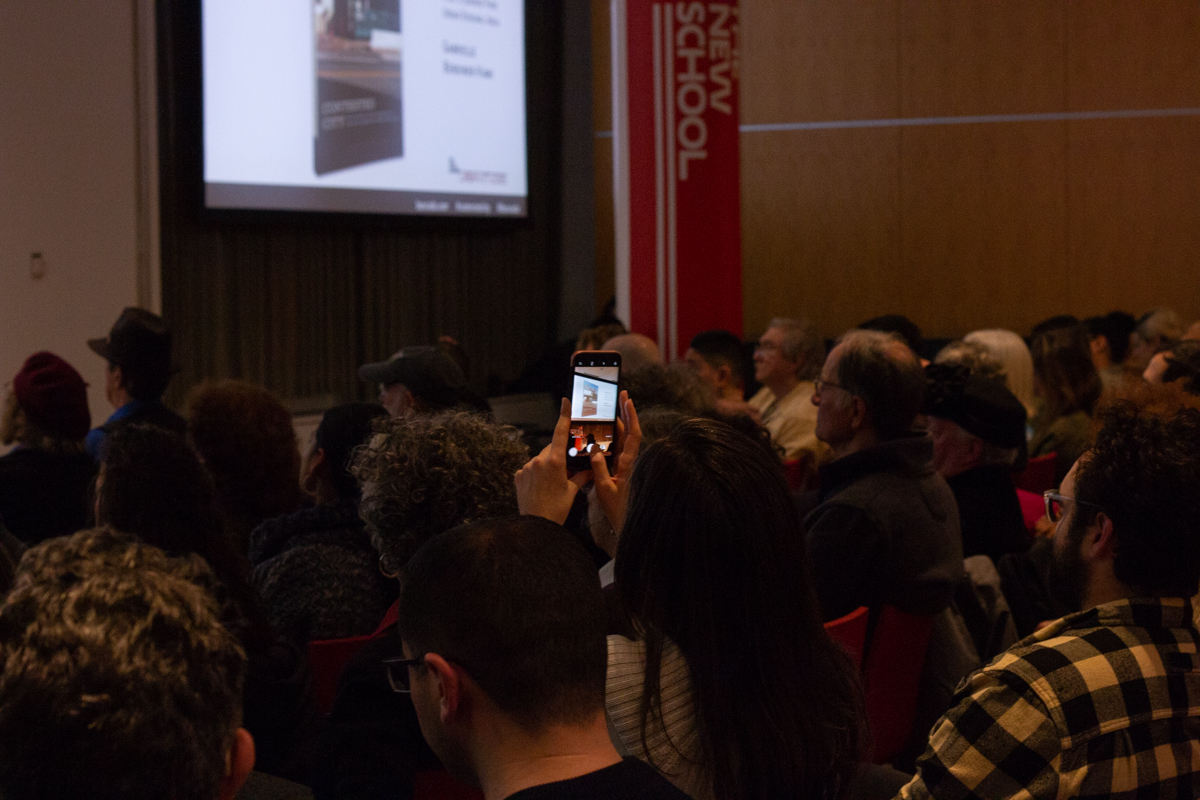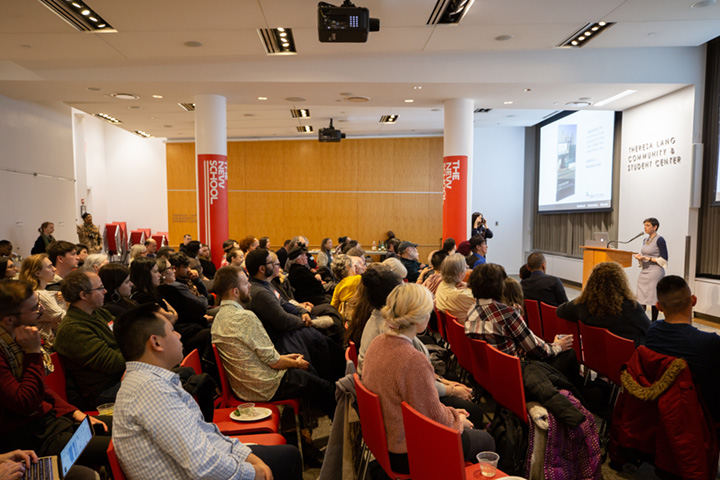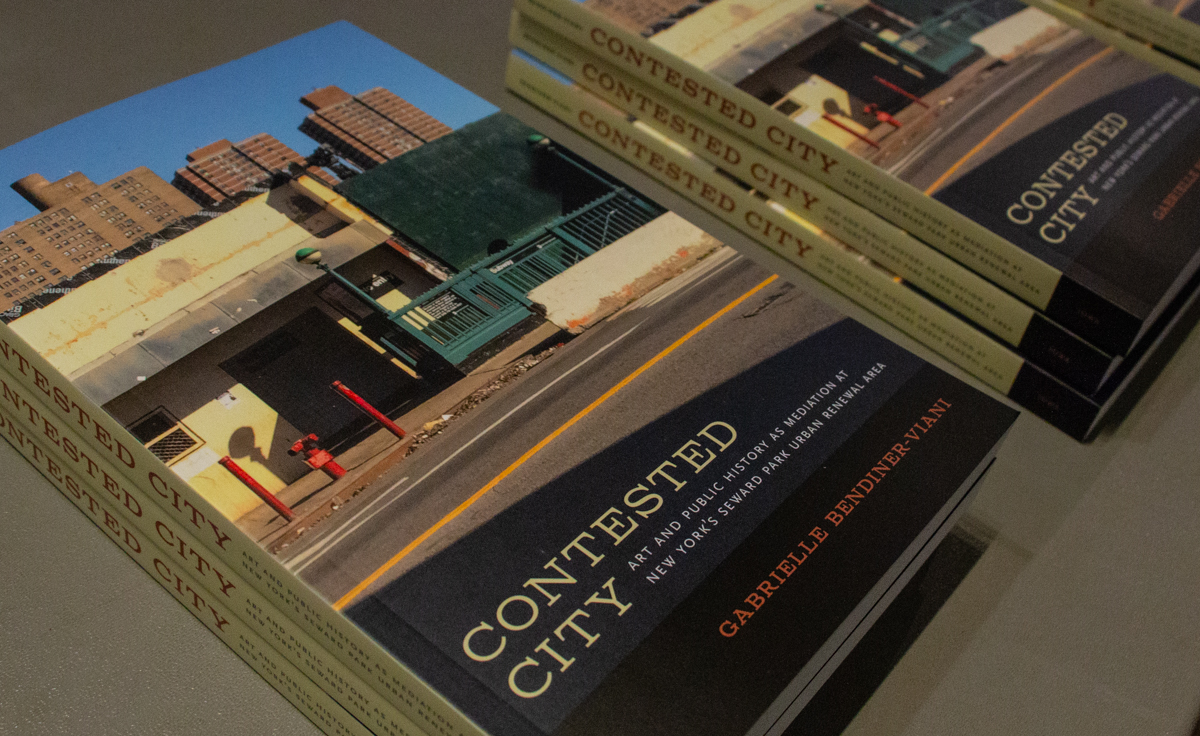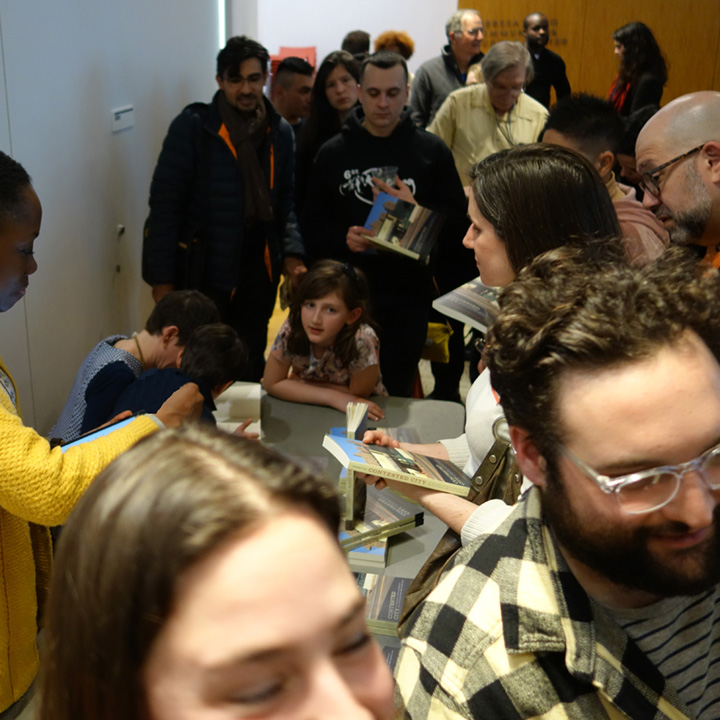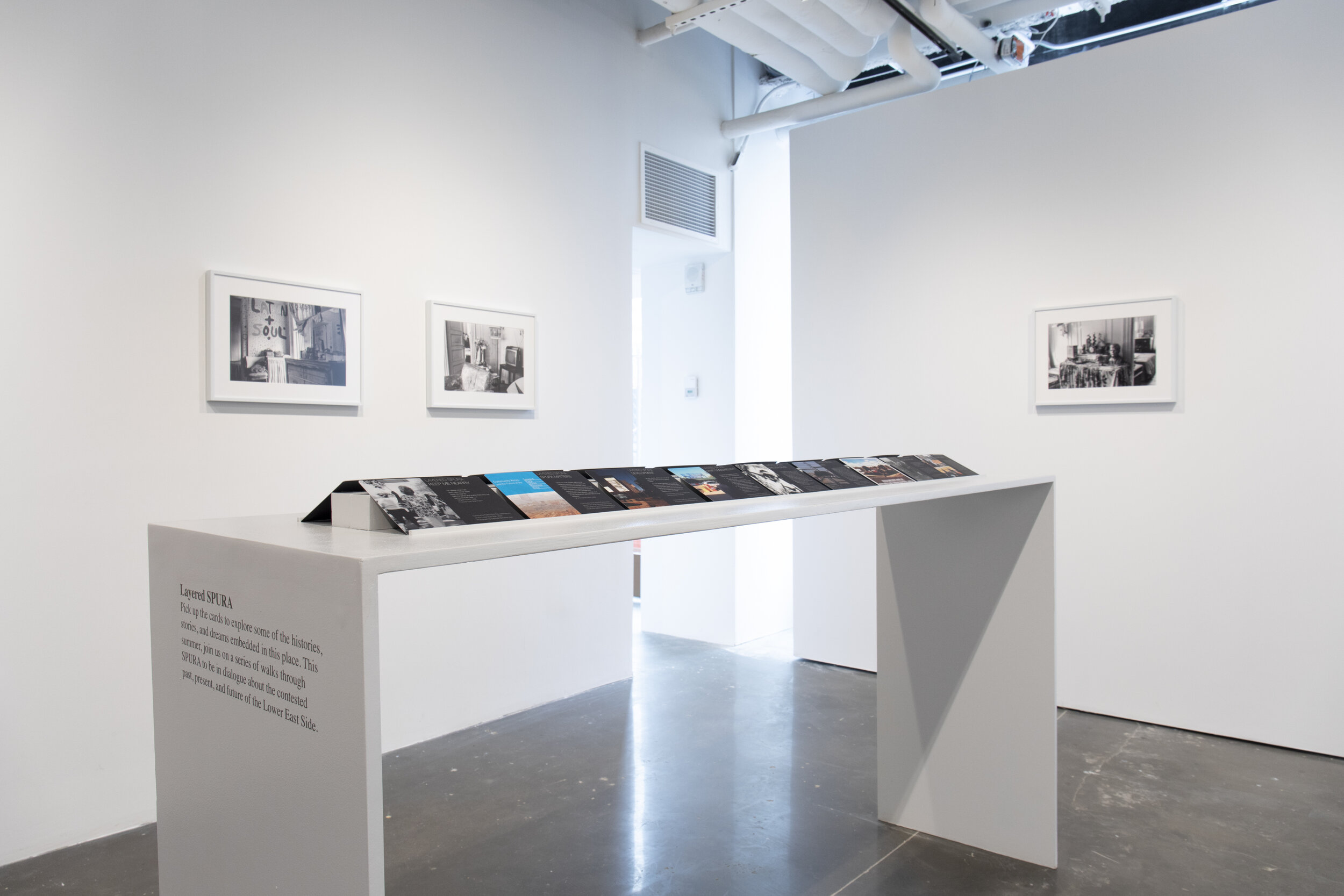



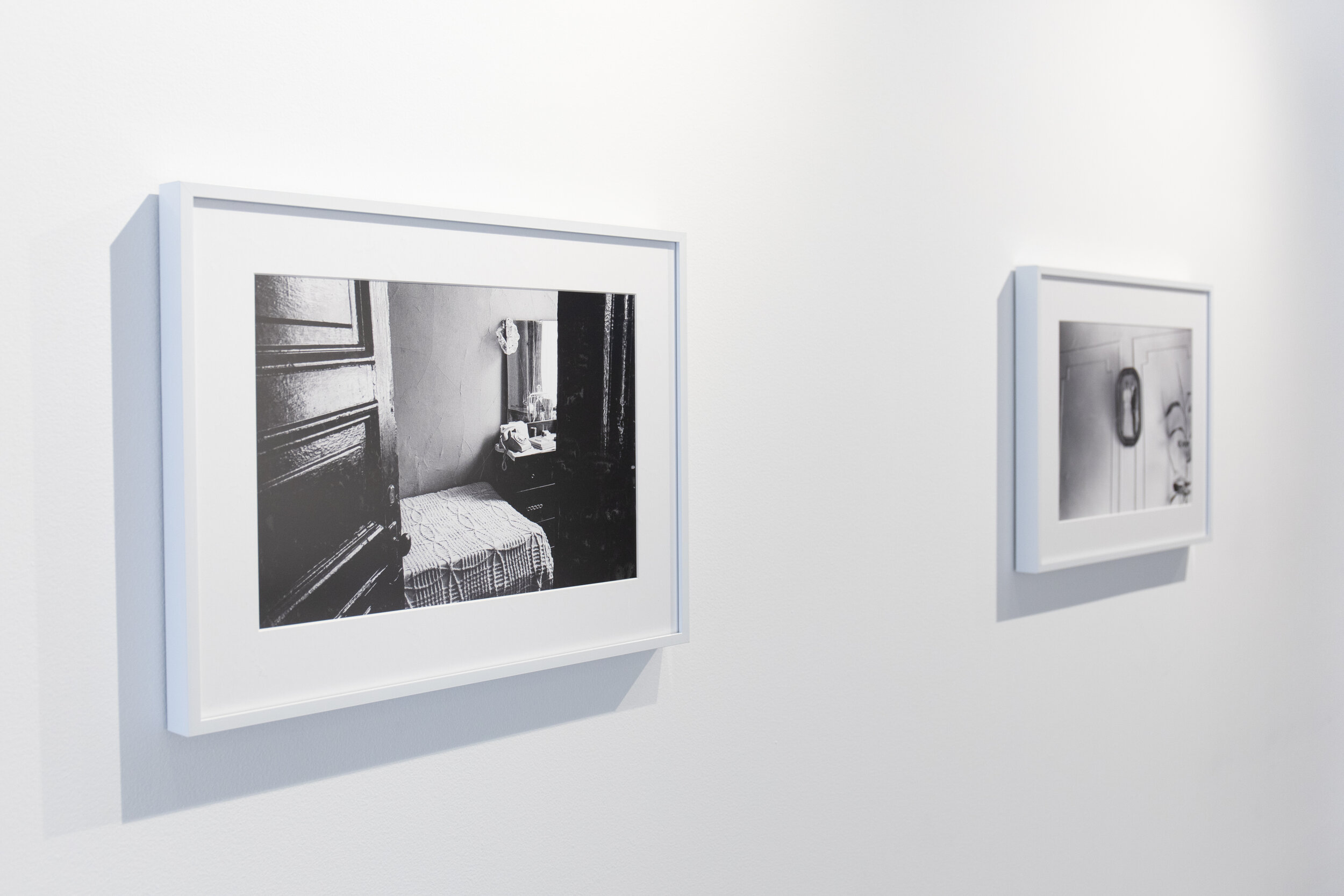
Images c. Shunji Noda
On May 31, 2019, Gabrielle’s newest exhibition, Keep Me Nearby, opened at Cuchifritos Gallery & Project Space / Artists Alliance, as the first exhibition in the new Essex Market. Growing from Contested City, this new exhibition made space for dialogue in the still-contested neighborhood, in the complexity and disorientation of the large-scale development of Essex Crossing, and showed never-before seen photographs by Nick Lawrence of homes at SPURA before demolition, in visual conversation with Gabrielle’s Layered SPURA cards & participatory walks.
Untapped Cities described the exhibition as helping to “piece together the complicated stories of SPURA’s effect on the community”, and the exhibition was also featured in the Lo-Down. The exhibition was also the subject of a new introduction to the re-airing of Gabrielle’s popular interview about Contested City on WNYC’s All of It with Alison Stewart.
Keep Me Nearby
Gabrielle Bendiner-Viani
with photographs by Nick Lawrence
so please when I die… / don’t take me far away / keep me nearby / take my ashes and scatter them thru out / the Lower East Side
– Miguel Piñero
For fifty years, as New York’s Lower East Side has gone from disinvested to gentrified, residents have lived with a wound in the neighborhood, a series of vacant lots known as the Seward Park Urban Renewal Area (SPURA). Most of the buildings on the 14-square-block area were condemned for urban renewal and “clearance” in 1967, displacing almost two thousand families–mostly of limited means, and mostly families of color. Residents were promised that they would soon return to new housing, very little of which ever came. Over decades, efforts to keep out affordable housing sparked deep-rooted enmity and stalled development, making SPURA a dramatic study of failed urban renewal, as well as a microcosm epitomizing the greatest challenges faced by American cities since World War II. Fifty years of activism for affordability and justice finally led to an extraordinary process in 2012 of neighborhood negotiation through which guidelines for the site were developed that would include 50% below-market-rate housing. Essex Crossing, one of the city’s largest developments, is the manifestation of those guidelines, and is now rising on the SPURA site. The new building for the venerable Essex Market, of which Cuchifritos is a part, is at its heart.
Ten years ago, artist and urbanist Gabrielle Bendiner-Viani was invited to enter this tense community to collaborate on a new approach to planning through public history and public art. Created in a multi-year collaboration with community activists GOLES and SPARC, and her students at the New School, the exhibitions and performative guided tours of Bendiner-Viani’s “Layered SPURA” project provided new opportunities for dialogue about the past, present, and future of the neighborhood. The project is now the subject of Gabrielle’s new book Contested City: Art and Public History as Mediation at New York’s Seward Park Urban Renewal Area.
Keep Me Nearby returns to the intersection of Essex and Delancey a decade after Layered SPURA began, with two distinct projects in dialogue with each other. These works help us think about what it still means to make home in this neighborhood, and how understanding the complex threads of this neighborhood’s past can help us imagine a more just future.
Six never-before-seen images by photographer Nick Lawrence of the lived-in apartments that were demolished at SPURA in the late 1960s and early 1970s bring us into homes and lives in 1969. Four of these images were taken in the family apartment of Angel Soto, another, with its vivid declaration of “Latin + Soul,” is from a nearby tenement, and the last hints at what was to come: a staircase in 145 Clinton Street, boarded up and awaiting demolition. Nick came to make these photographs while he was an art teacher at a local junior high school, and while pursuing a larger project photographing the teenagers he came to know on the Lower East Side. We are lucky that a few of those teenagers brought him into their homes, and took him on forays into the tinned up buildings around the neighborhood. We are lucky that he had the presence of mind to make these photographs, and to have kept them safely, able to unearth them when in her research for Contested City Gabrielle came asking if perhaps he might have a photograph of anyone’s home at SPURA. To have documentation of spaces of life in the midst of urban renewal is rare, and the meaning of these photographs is both derived from everything that happened at SPURA after they were made, and from the way that many of us can see our own homes and families reflected in them.
The second part of this show is the “Layered SPURA” project, Gabrielle Bendiner-Viani’s interactive project that engages the viewer in the many histories, stories, and dreams embedded in this place. Created from the archives, photographs, and interviews of her long-time work at SPURA, the Layered SPURA cards on view in the gallery allow you to find your own way, piecing these complicated stories together. A selection of the cards are included in this catalogue — take them with you as you walk back out into the neighborhood, and read them on the street to help you see a small slice of this place’s complexity. Throughout the summer, Keep Me Nearby will host a series of Layered SPURA tours in which we’ll use these cards together. These tours will encourage participants to use their bodies, their voices, and their capacity for dialogue to understand the contested urban past, present, and future(s) of the Lower East Side. Special guests from SPURA’s long-time community activist community will join the tours, and each event will culminate with a conversation about this old, new, place.
Together, these works help us look back in order to look forward–to see this place as home, and to reclaim our civic capacity to see, and protect, the city as a place for people, for dialogue, and for justice.
A word on the epigraph: Miguel Piñero’s iconic “A Lower East Side Poem” has long grounded Gabrielle’s Layered SPURA work, and we share it with you with deep love for the soul of the Lower East Side.
Nothing in community can be done alone. Special thanks to Edwin Tito Delgado for introducing Gabrielle to Nick and to this archive, and to everyone involved in all parts of the Layered SPURA project over the years, including Damaris Reyes, Harriet Cohen, Marci Reaven, Nilda Rivera, Lillian Rivera, Ed Rudyk, Kara Becker, and all the City Studio students at the New School. For imagining this exhibition with Gabrielle on the occasion of Cuchifritos re-opening in its new home, thank you to Jodi Waynberg, Alessandro Facente, Franklyn Rodriguez, Ting Y. Lin, and as always, Kaushik Panchal and Luca Panchal-Viani.
Keep Me Nearby opening, May 31, 2019
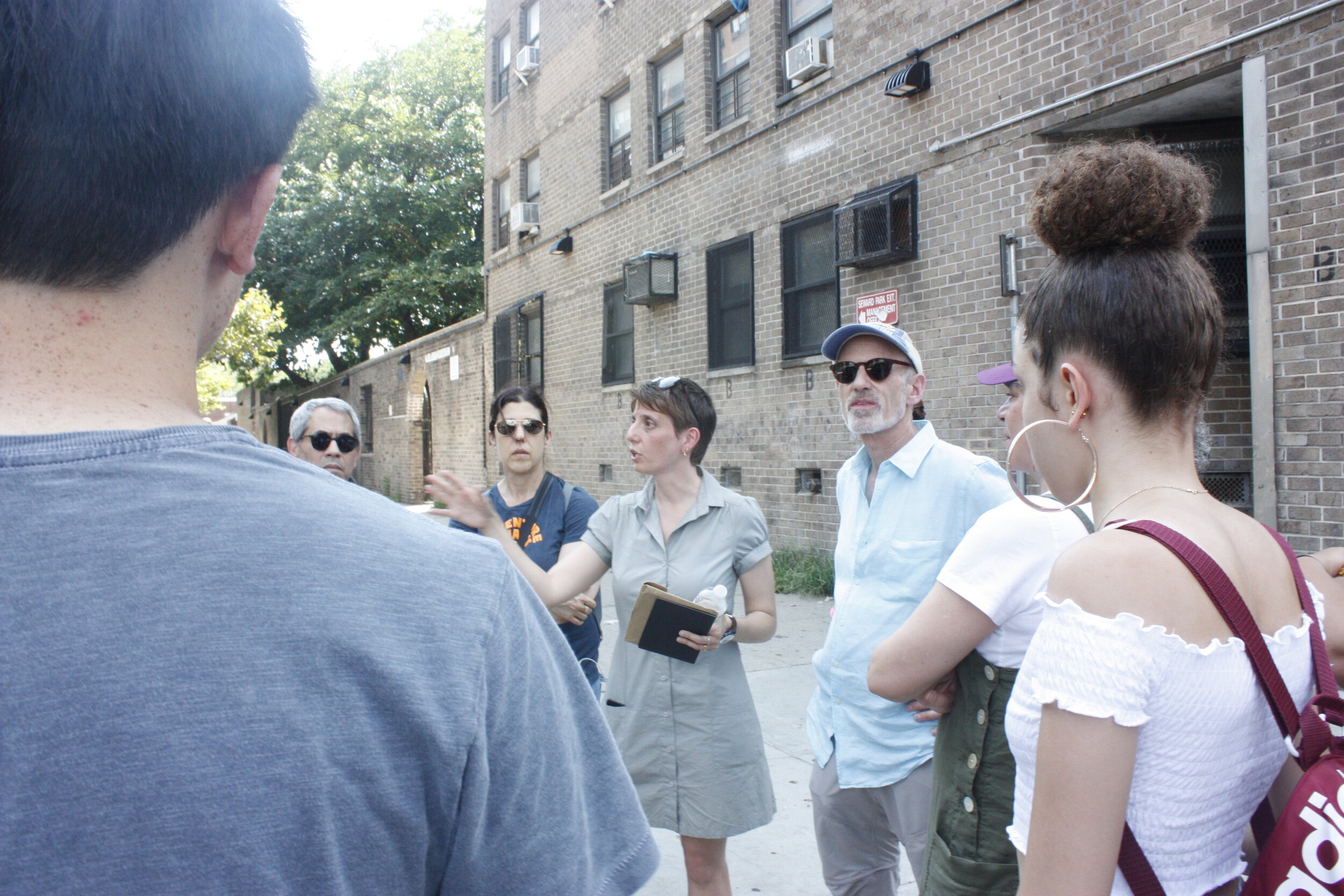

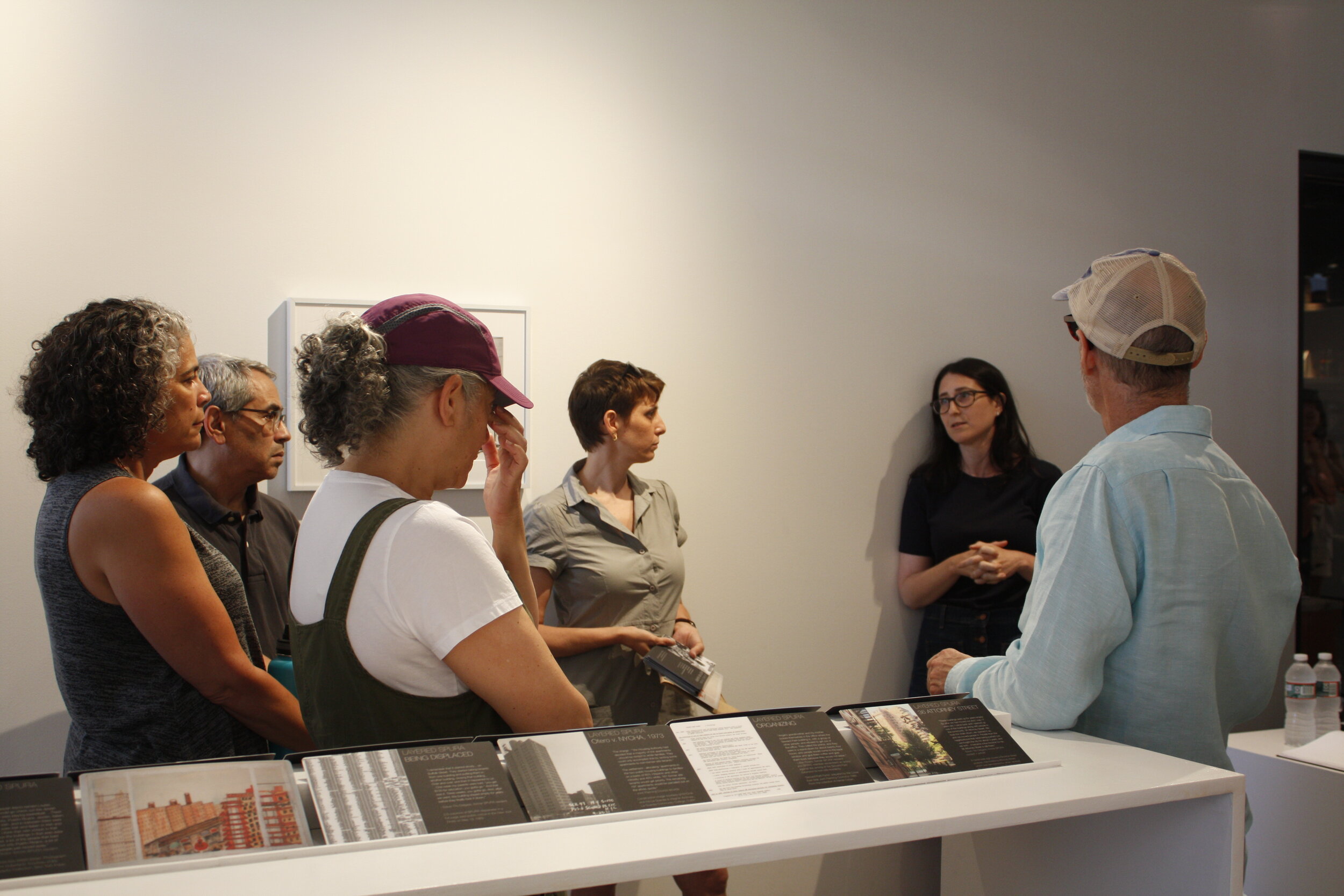
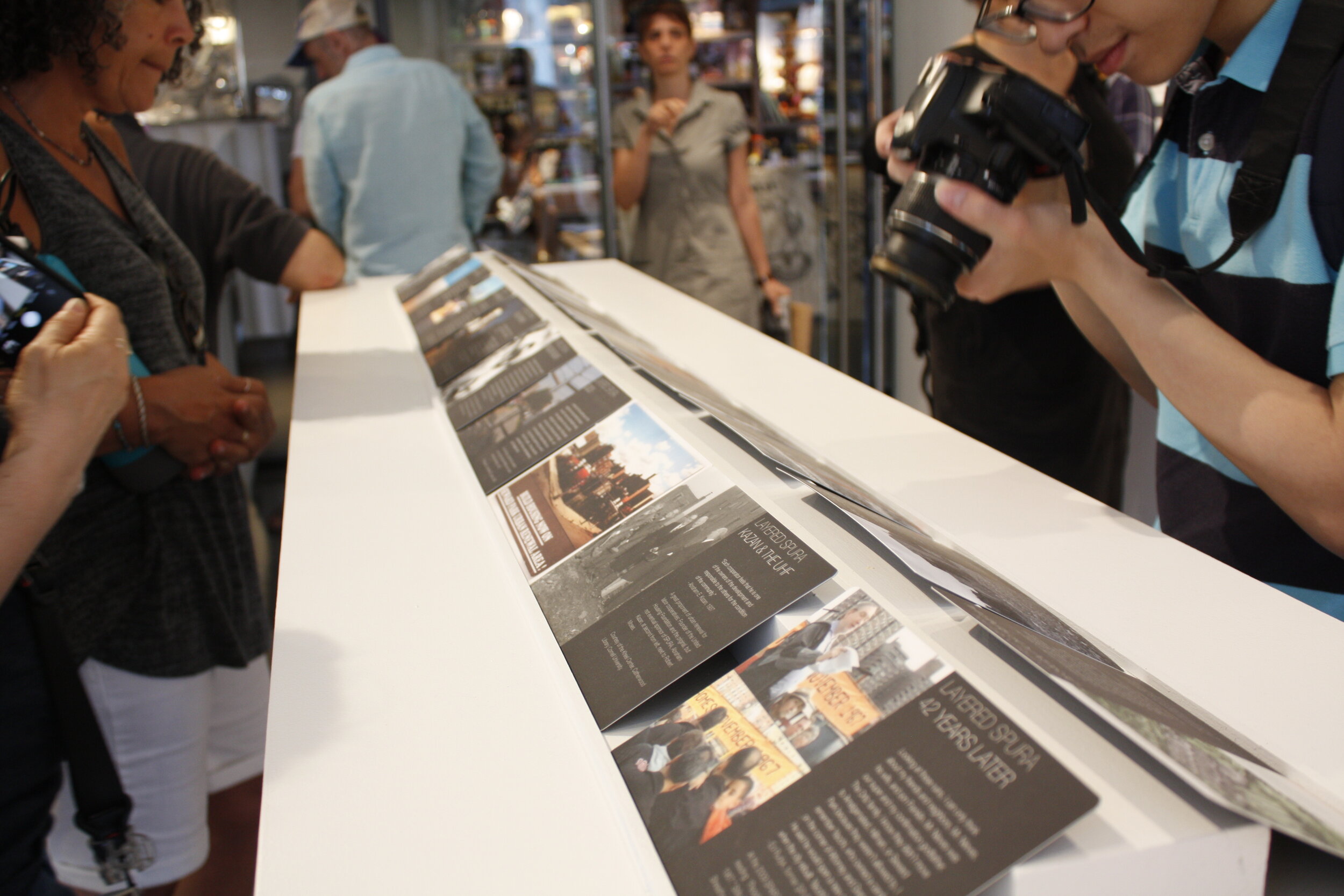
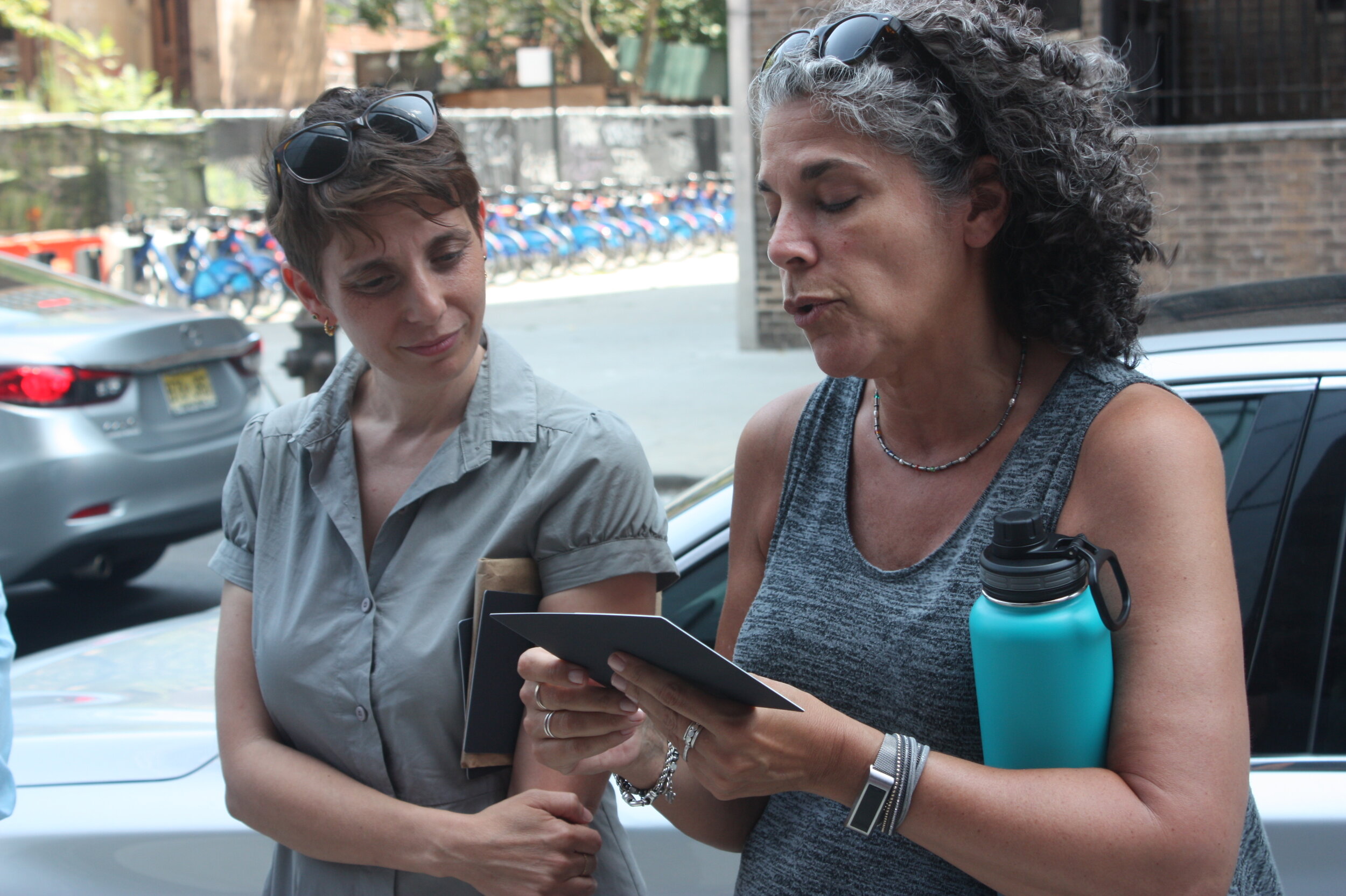
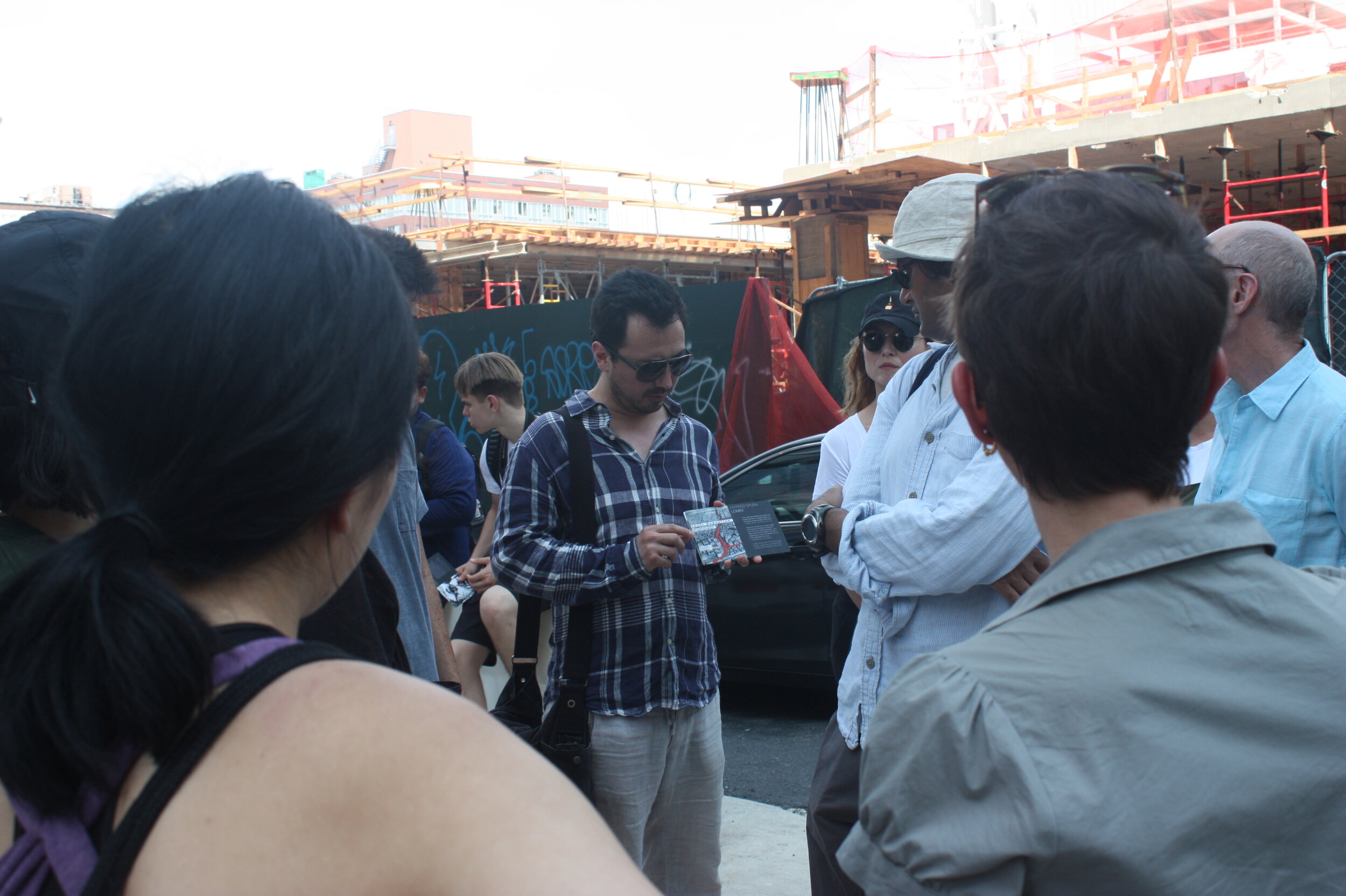
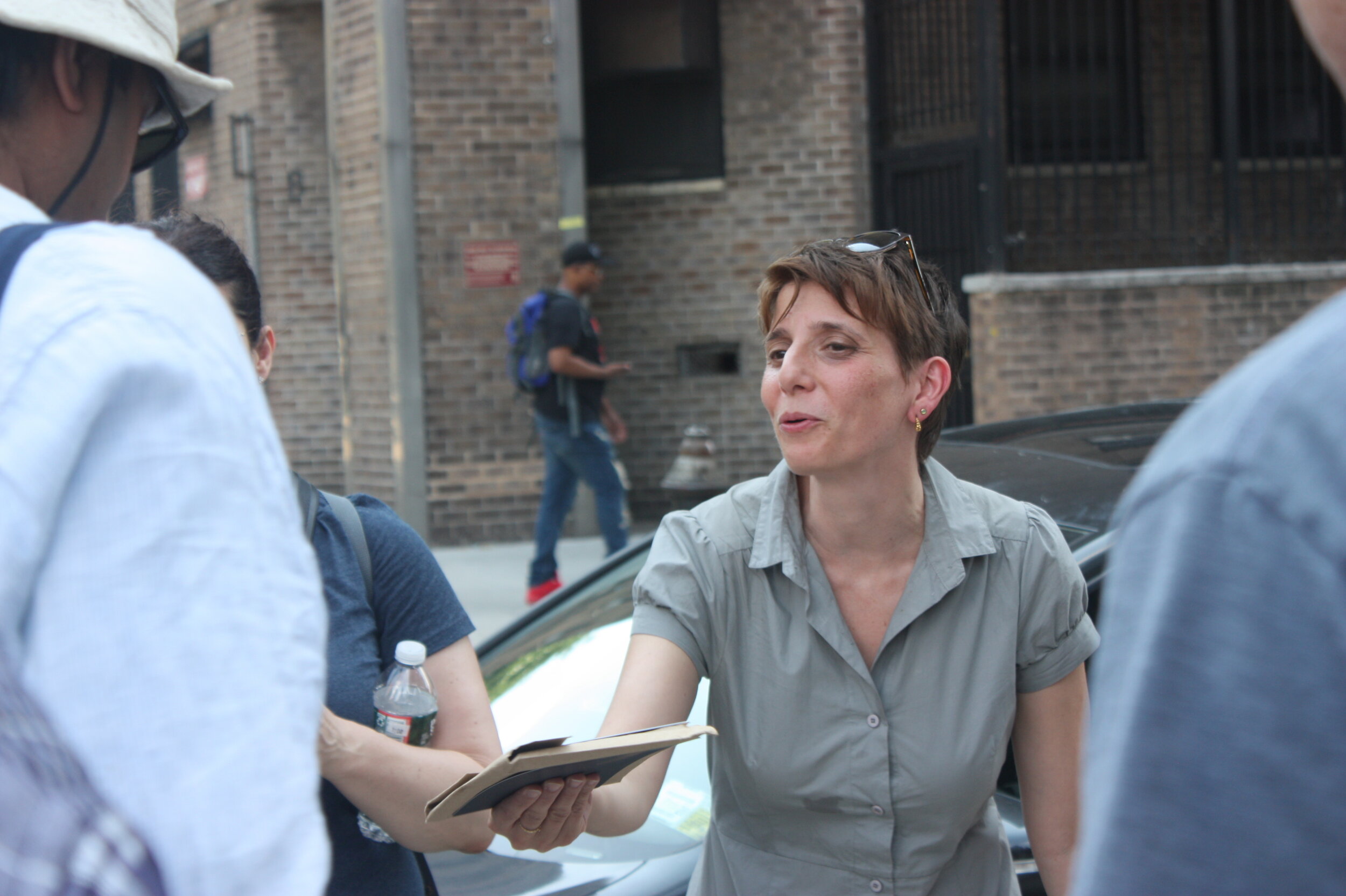
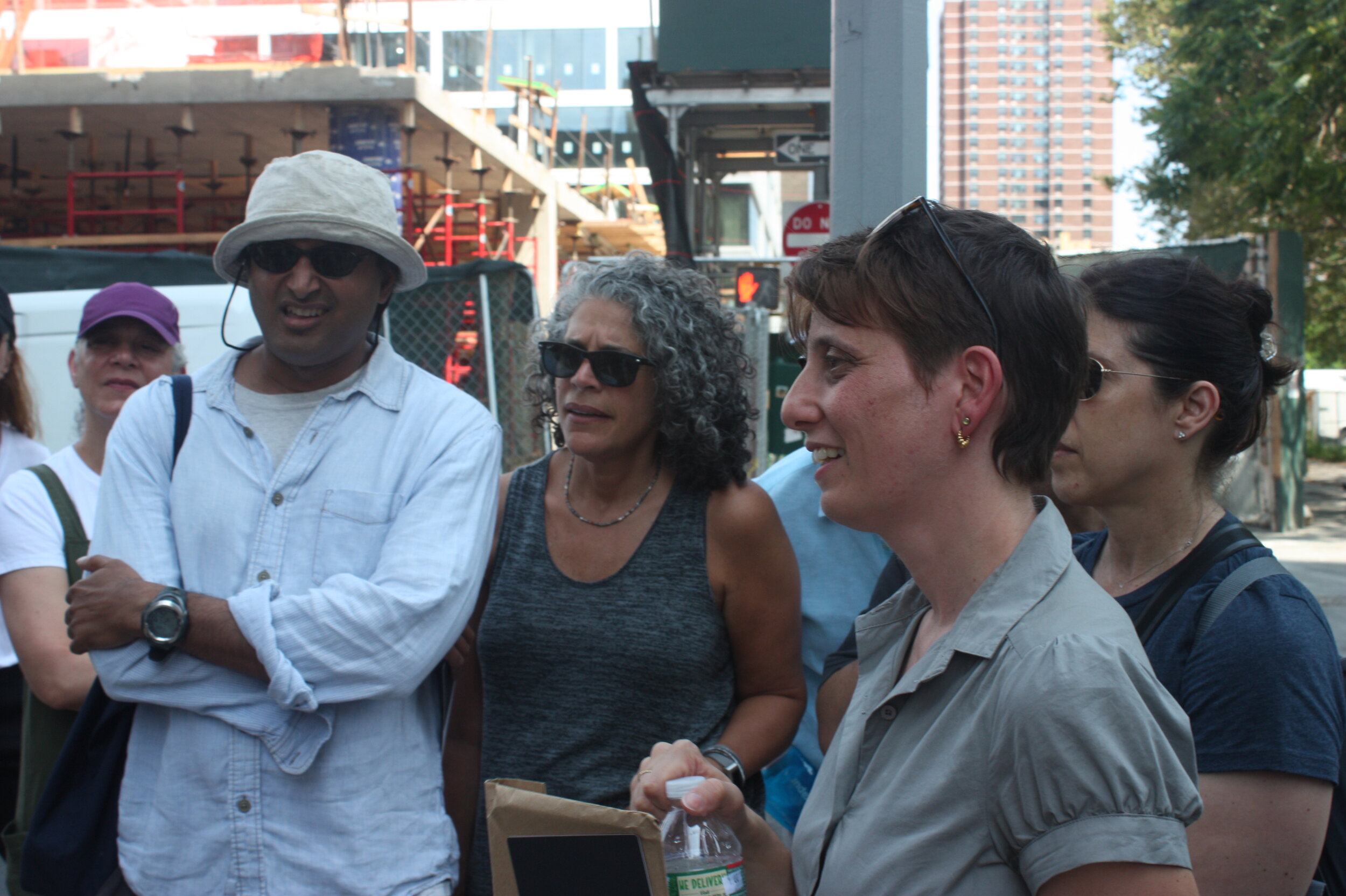

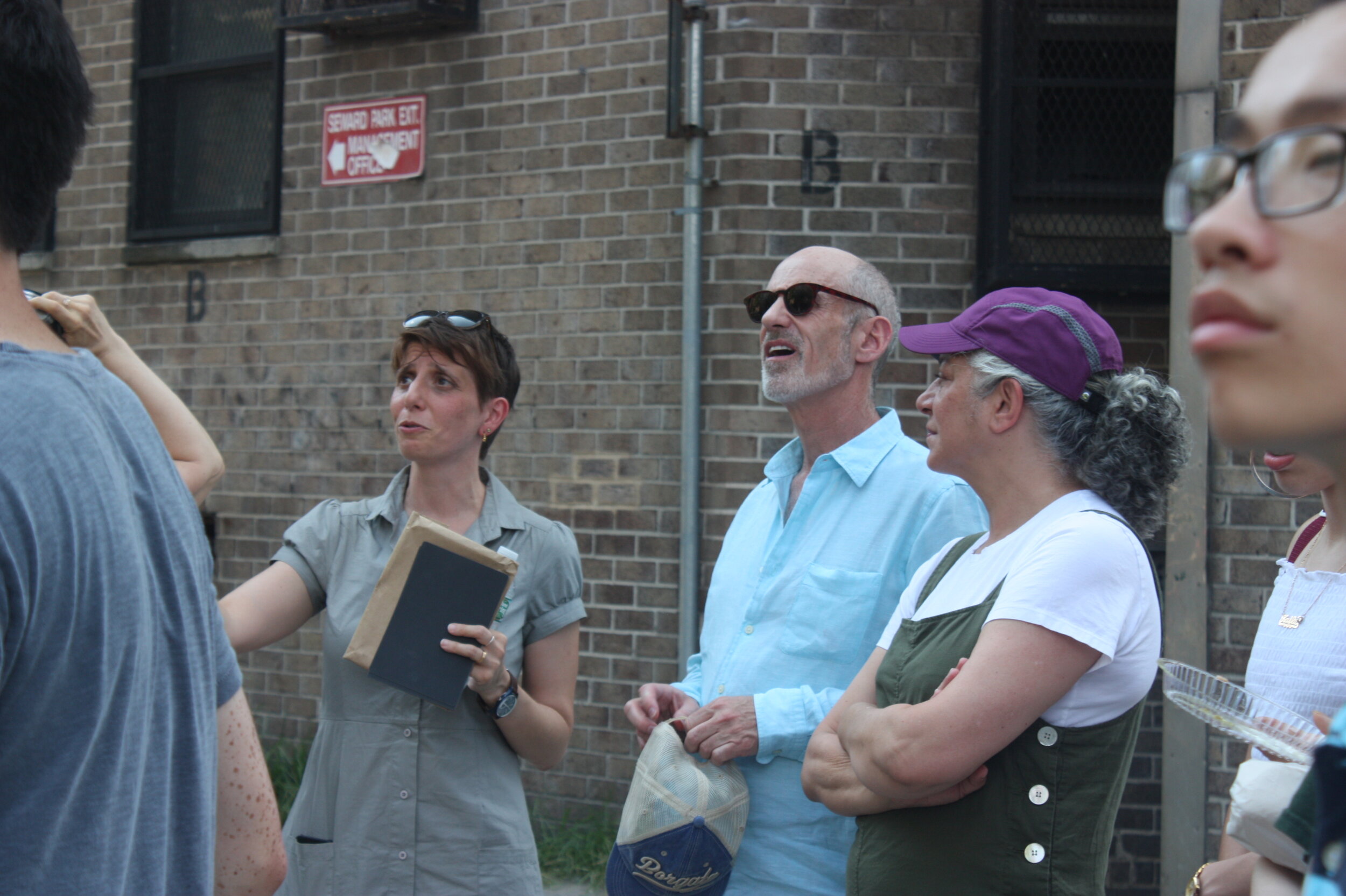
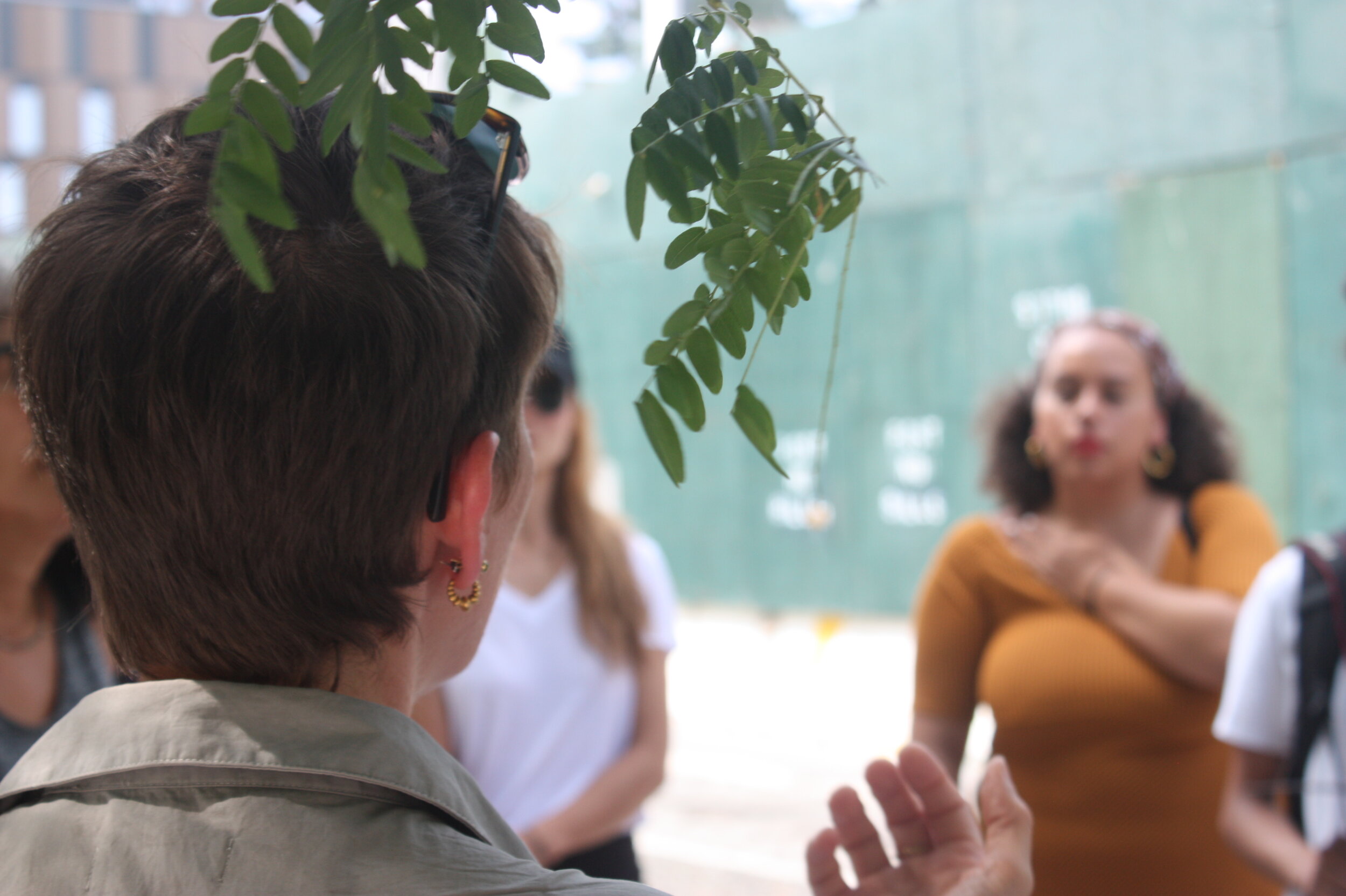
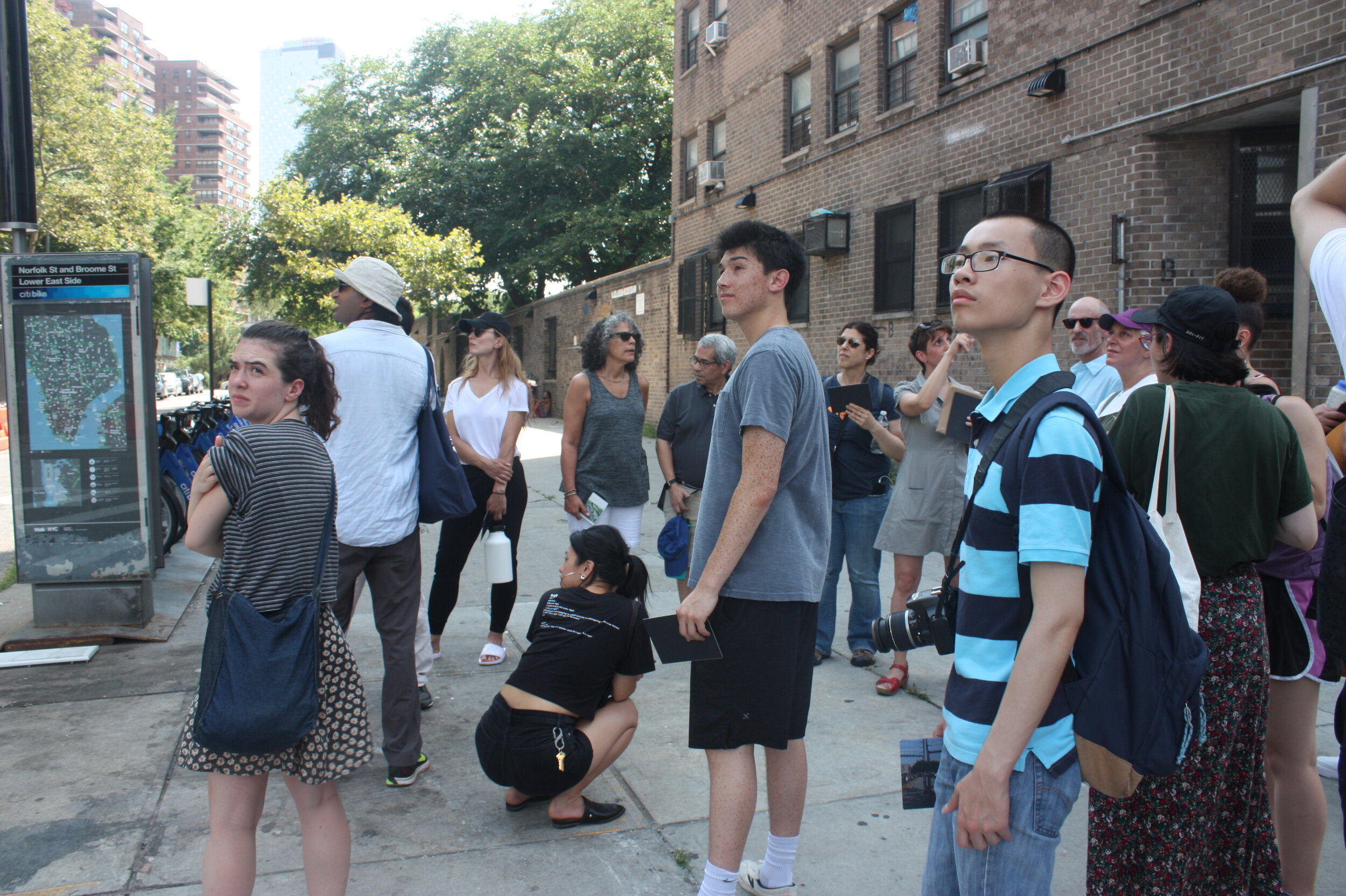

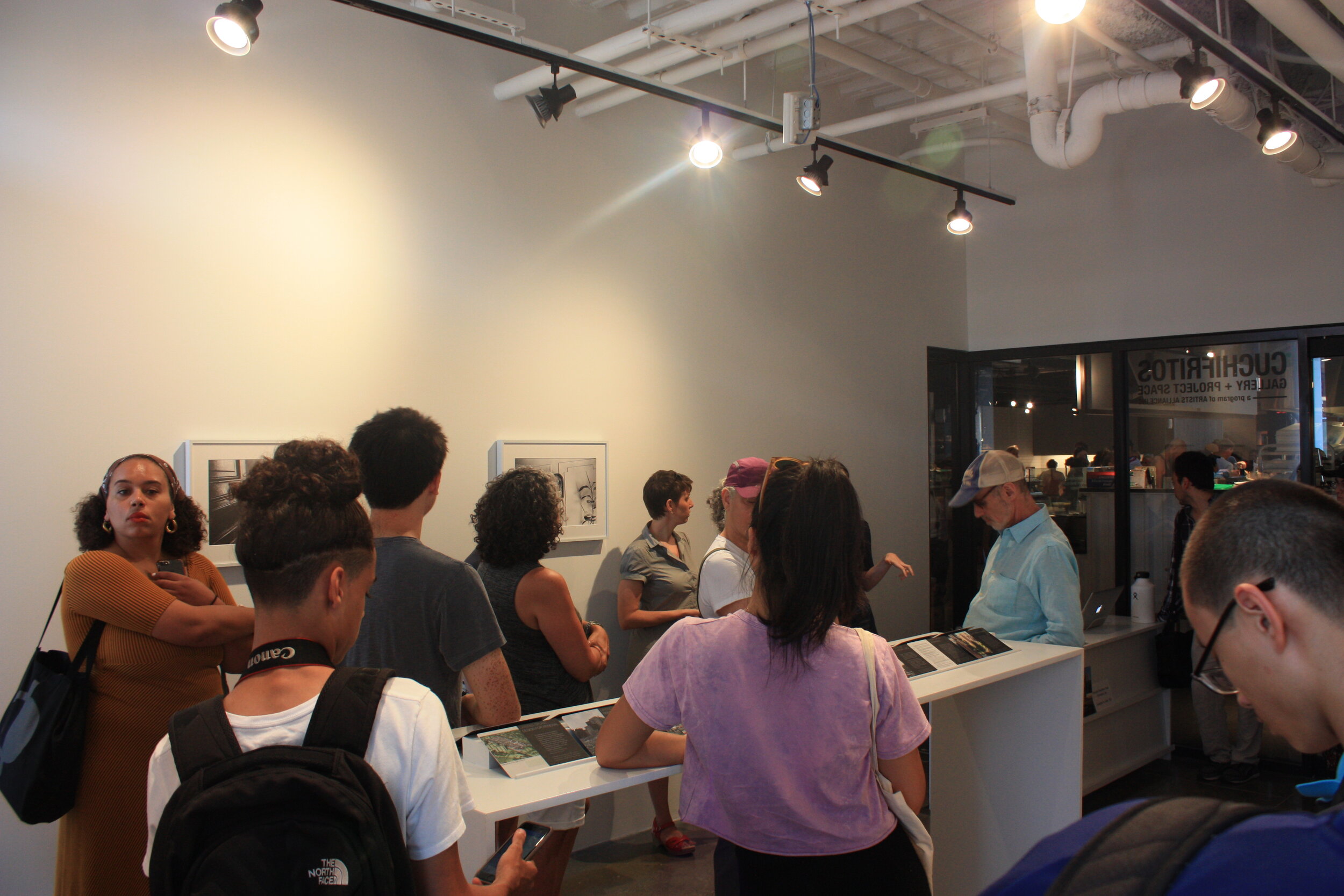
A sold-out Layered SPURA walk, part of the Keep Me Nearby events, on a 98-degree day in July. There is so much love for the LES.
Photographs by ICP’s Teen Academy photographers Daniel Lu, Joey Santos, Michael Ortiz, and Pasha Safonov.
* * *
Gabrielle Bendiner-Viani is an urbanist, curator, and artist pioneering public arts and urban research for community engagement, and is the author of Contested City: Art and Public History as Mediation at New York’s Seward Park Urban Renewal Area. She is principal of the design and research studio Buscada (buscada.com) and teaches urban studies and public art at The New School. She was Post-doctoral Fellow in Visual Culture at the International Center of Photography and holds a PhD in environmental psychology from the Graduate Center, CUNY. She regularly consults with arts and culture organizations on community and art engagements and strategic visioning. Her creative practice has been shown at institutions including MIT, the Brooklyn Public Library, the Center for Architecture, the Sheila C. Johnson Design Center, and Tate Britain. Her work on cities, culture, and photography has appeared in journals including Visual Studies, Urban Omnibus, Space and Culture, Society & Space, and Buildings & Landscapes. She lives in New York City.
Nick Lawrence is a fine art and documentary photographer currently living in Berkeley, California. Lawrence grew up in New York City, graduated from Cornell University and studied art history at NYU’s Institute of Fine Arts. As a photographer, he is primarily self-taught but studied with Lisette Model who was an important influence. His first experiences in photography were in 1964 and 1965 as part of the civil rights movement in Tennessee, Mississippi, and Louisiana. Lawrence’s Lower East Side pictures were included in shows at the George Eastman House and MIT, and were also exhibited as a one-person show at the Underground Gallery (NYC). His work has been shown at the University of Tennessee Martin, Berkeley Art Center, and the San Francisco Museum of Modern Art Artist Gallery. His photographs have appeared in numerous publications and books and he is represented in a number of private collections including the George Eastman House and the University of Tennessee.
Artists Alliance Inc. is 501c3 not for profit organization located on the Lower East Side of New York City within the Clemente Soto Vélez Cultural and Educational Center. Cuchifritos Gallery is supported in part by the New York City Department of Cultural Affairs in partnership with the City Council. Cuchifritos Gallery programming is made possible by public funds from the New York State Council on the Arts with the support of Governor Andrew M. Cuomo and the New York State Legislature and the National Endowment for the Arts. We thank the New York City Economic Development Corporation and individual supporters of Artists Alliance Inc for their continued support. Special thanks go to our team of dedicated volunteers and interns, without whom this program would not be possible.
